
TRAX436
OWNER???S MANUAL

TRAX436
OWNER???S MANUAL

Contents
Page 2

Page 3

Page 4
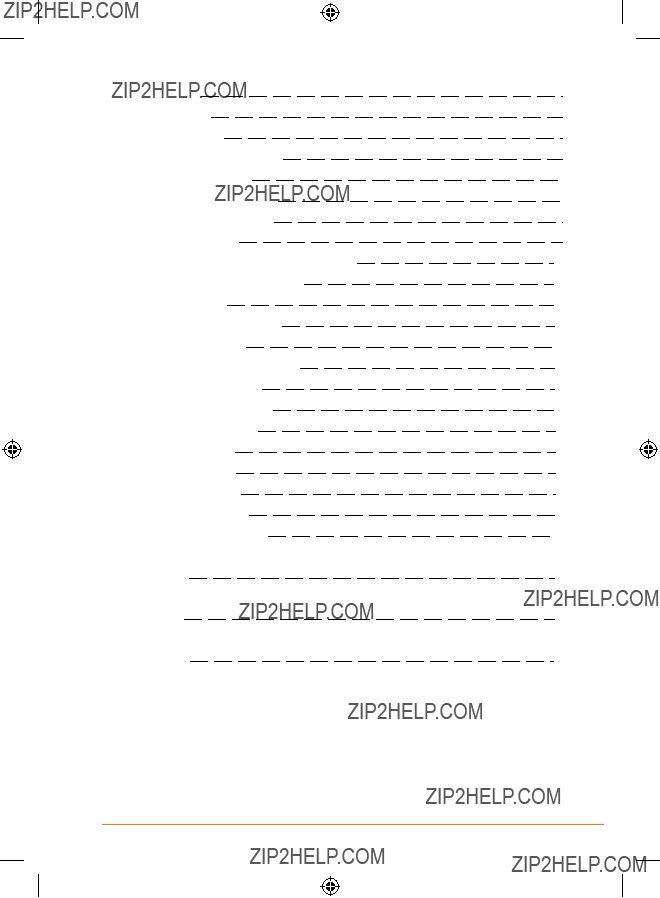
Page 5

What Do I Do First?
Make Sure These Items Arrived in the Box
If anything listed here is missing or damaged, contact your place of purchase immediately.
?????? Press the power button momentarily to turn the screen off (or back on); the device
stays on and can still give directions.
?????? Press the power button in and hold it for three seconds to turn the device completely off.
USB Port for PC connection
Power connection
Windshield mount
?????? If you do put the device on your windshield, don???t forget to lock it up or take it with you when you leave your car.
Brackett
lock
 SuctionSuction
SuctionSuction
latchlatch
Page 6

What Do I Do First?
Included accessories
DC (car) adapter
Plug it in
?????? Connect the power adapter to the
power connector on the lower right side of the device.
?????? Plug the other end into your car???s cigarette lighter (or any standard 12 V DC outlet).
?????? Only use the power adapter that came with your device. Any other adapter might damage the device.
?????? Whenever it senses power coming in, the device turns itself on and charges the battery.
?????? As soon as the power stops (for example, when you unplug the adapter or turn off your car), the device automatically shuts down. If you want it to stay on, tap anywhere on the screen during the
Shutting down message.
?????? You can turn the device on or off anytime you want: just push the power button on top of the device (hold the button for three seconds to turn the device off). See Hardware button (Power on/off) p19.
Page 7

How Do I Put It in My Car?
Safety considerations
?????? Don???t install any device where it will block your view (including your mirrors!) while you???re driving.
?????? Keep your attention on the road! Don???t try to operate or focus on any device while you???re driving. If you have to concentrate on a device, pull off the road for a few minutes.
?????? It???s a good idea to take valuable items with you when you leave you
Don???t leave the device in direct sunlight for a long period of time or where the temperature could go above 60?? C (140?? F).
Page 8

How Do I Put It in My Car?
Attaching the windshield mount
2 Rotate the bracket up so the head ???ts into the gap.
bottom of the device.
Page 9

How Do I Put It in My Car?
Adjusting the windshield mount
Lift the adjustment lock to move the suction cup and bracket
The bracket pivots in all directions
?????? The adjustment lock keeps both the bracket and the suction cup locked into place. Lift the adjustment lock to change the position of the device.
?????? The suction cup joint pivots front to back, and the bracket joint pivots up, down, right and left, any just about angle in between.
?????? Angle the suction cup and the bracket where you want them, then push the adjustment lock back down to lock the windshield mount into position.
?????? If the bracket still moves too easily after you push the adjustment lock down, tighten the bracket joint (lift the adjustment lock, and twist the lock handle clockwise two, maybe three turns).
Page 10

How Do I Put It in My Car?
Mounting on the windshield
Make sure the device does not block your view of the road or your mirrors.
Once you decide where you want the device, hold the suction cup in that position, then adjust the mount so you have the best view of the device.
1)Press the suction cup flat against the windshield.
2)Push the suction lock up (towards the suction cup) until it snaps into place.
3)Gently pull on the mount to make sure it is secure.
If you have trouble getting the suction cup to stick:
?????? Clean the spot with an
?????? Dry the spot completely (use a
?????? Make sure the spot is smooth and flat (suction cups won???t
stick well on a curved or textured surface).
Removing the windshield mount
When you release the suction latch, make sure you???re holding or somehow supporting the device.
Lift the suction latch and use the plastic pull tab to pull the suction cup off of the glass.
Page 11

How Do I Put It in My Car?
Mounting on a flat surface
If you want to put the device somewhere other than your windshield (or anywhere the suction cup won???t stick), you can use the anchor disk. Once you glue the anchor disk down, the windshield mount installs inside the disk just like it does on glass.
When you???re deciding where to put the anchor disk, here are some things to keep in mind:
?????? The surface should be as flat as possible. If the disk is upside down or at a sharp angle, it might not hold the device???s weight.
?????? The surface should be as smooth as possible. If the surface texture is too rough, the glue may not stick as well.
?????? The anchor disk will stick permanently on most surfaces. If you try to remove the disk, you might damage the surface.
?????? Don???t peel off the protective sheet until you???re ready to install the disk. Once you expose the glue, you can???t stop easily.
1)When you decide where you want to mount the disk, hold the suction cup in that spot and set the angle and position of the bracket (just like you would for mounting on your windshield).
2)Clean the spot to remove any wax, grease, protecterants, etc.
3)Carefully peel the protective sheet from the bottom of the anchor disk to expose the glue.
Page 12

How Do I Put It in My Car?
4)Hold the disk exactly above the spot where you want to glue it down. (Remember, the glue is designed to be permanent!)
5)Press the disk firmly against the surface. Push down along the edges, too, so that every part of the disk makes good contact with the surface.
6)Before you install the windshield mount, gently tug on the disk to make sure it???s secure.
7)Press the suction cup flat against the anchor disk, then push the suction latch down (towards the suction cup) to lock it into place.
Page 13
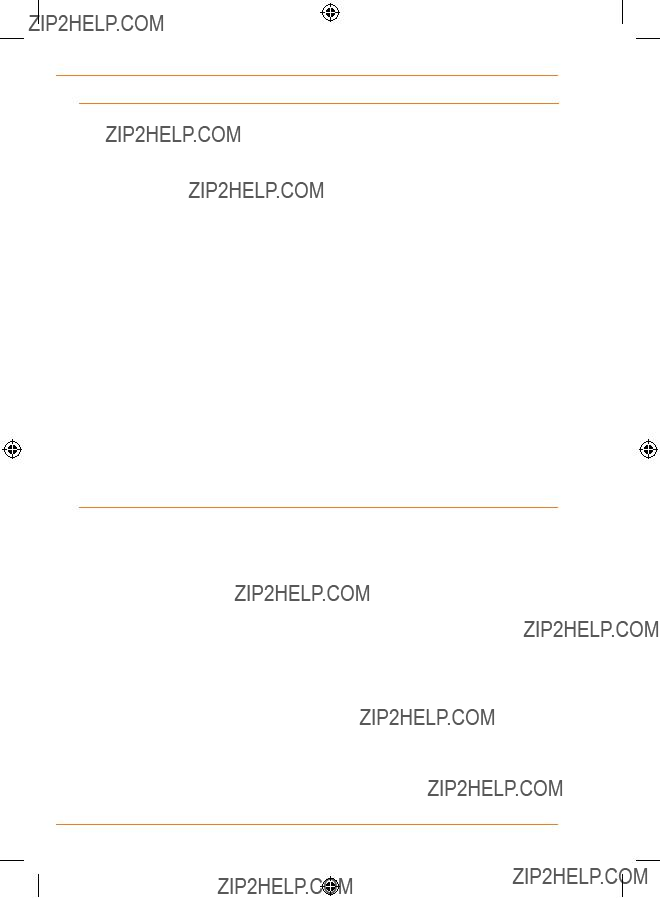
How Do I Use It?
1: Warnings and Safety information
TRAX436 is a navigation system that helps you find your way to your destination with a connected GPS receiver. TRAX436 does not transmit your GPS position; others cannot track you.
It is important that you look at the display only when it is safe to do so. If you are the driver of the vehicle, we recommend that you operate TRAX436 before you start your journey. Plan the route before your departure and stop if you need to change something in the route.
TRAX436 has a Safety Mode: if you turn on Safety Mode, you cannot change anything in TRAX436 while the vehicle is moving at a speed of 10 km/h (6 mph) or higher. Unless only passengers operate TRAX436, we strongly encourage you to turn on Safety Mode.
You must obey the traffic signs and follow the road geometry. If you deviate from the route that TRAX436 recommended, TRAX436 changes the instructions accordingly.
Never place mobile devices where it obstructs the driver???s view, where it is in the deployment zone of an airbag or where it might cause injuries in an accident.
2: Getting started with TRAX436
TRAX436 is optimised for
Page 14

Page 15
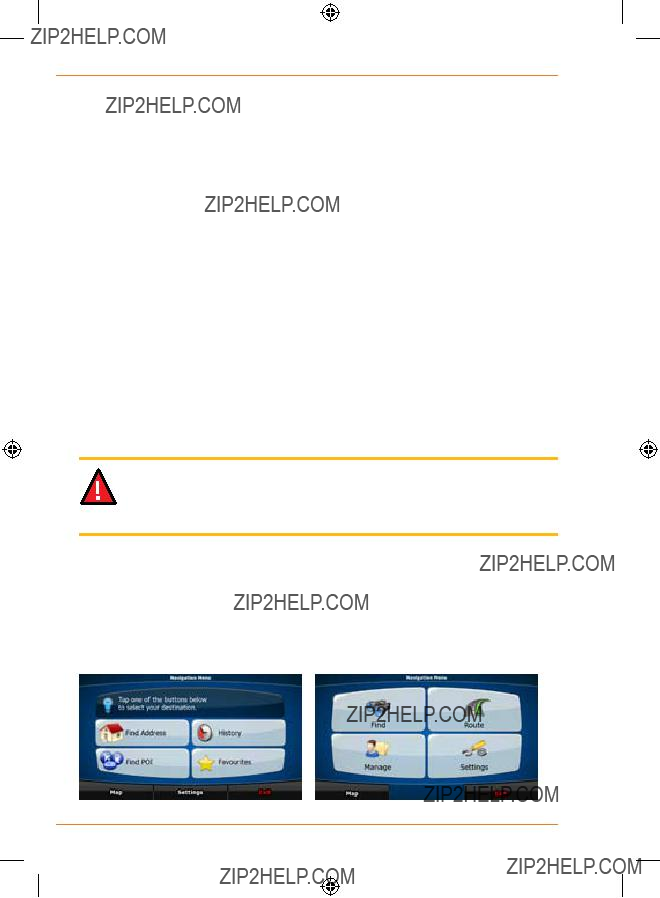
How Do I Use It?
Start using TRAX436
When TRAX436 is started the first time, you need to do the following:
1.Select the written language of the application.
2.Select the language and speaker used for voice guidance messages.
IMPORTANT! - To use the Spoken Street Names feature you must choose a guidance language which is enabled for Text To
NOTE Speech. These are indicated with (TTS).
3.Select whether to start the program in Simple mode or in Advanced mode. Later you can change the language or switch between the two operating modes in Settings (page 101).
After this, the Navigation menu appears and you can start using TRAX436.
Page 16

How Do I Use It?
The typical way of using TRAX436 is to select a destination, and start navigating. You can select your destination in the following ways (not all of them are available in Simple mode):
???Use the selected location on the map (the Cursor) (page 36).
???Enter a full address or a part of an address, for example a street name without a house number or the names of two intersecting streets (page 47).
???Enter an address with postal code (page 55). This way you do not need to select the name of the settlement and the search for street names might be faster as well.
???Use a coordinate (page 60)
???Use a saved location:
???a Favourite (page 57)
???a POI (page 58)
???the History of previously set destinations and waypoints (page 60)
Simple and Advanced modes
The two operating modes of TRAX436 mainly differ in the menu structure and the number of available features. The controls and screen layouts are the same.
???Simple mode: you have easy access to the most important navigation functions and the basic settings only. The rest of the
settings are set to values that are optimal for typical use.
???Advanced mode: you have access to the full functionality of
TRAX436.
To switch from Simple mode to Advanced mode: on the startup screen
(Navigation Menu), tap  ,
,  .
.
To switch from Advanced mode to Simple mode: on the startup screen
(Navigation Menu), tap  ,
,  .
.
The features and settings available in each mode are as follows:
Page 17

How Do I Use It?
Page 18
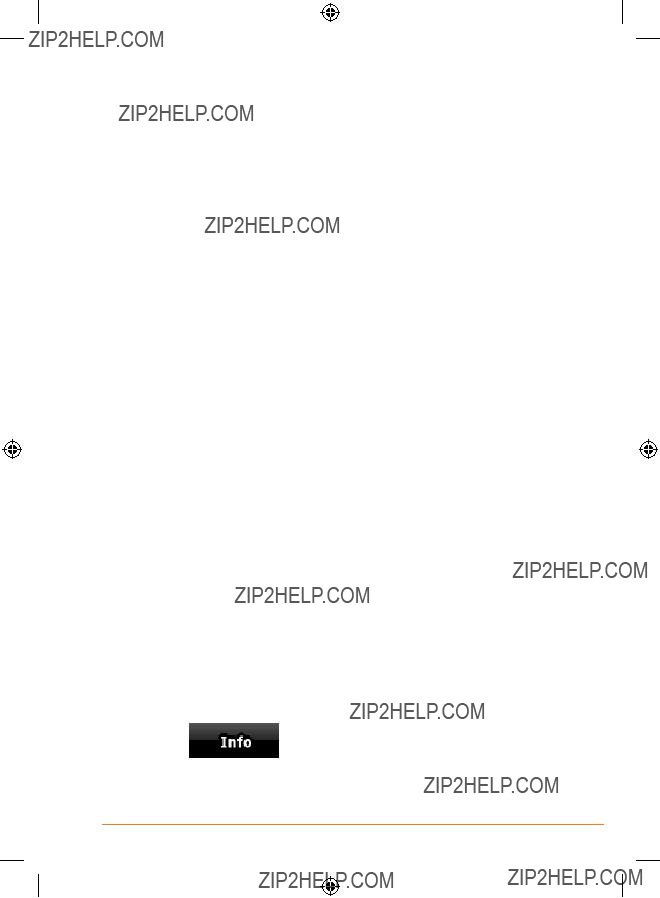
Hardware button (Power on/off)
You can use TRAX436 mostly by tapping the touch screen. The device has only one hardware button for turning power on or off.
When the device is on, pressing the power button momentarily turns the LCD screen off (the green LED stays on and the device continues to operate) or on. Press and hold the power button to turn the device off.
You can turn the devices on or off at any time. When the device is switched off, TRAX436 does not calculate your GPS position and it does not update the route or the driving instructions.
When you turn the device on again, TRAX436 continues navigating as soon as the GPS receiver has determined your position.
Buttons and other controls on the screen
When you are using TRAX436, you usually tap buttons on the touch screen.
You only need to confirm selections or changes in TRAX436 if the application needs to restart, it needs to perform a major reconfiguration, or you are about to lose some of your data or settings. Otherwise, TRAX436 saves your selections and applies the new settings without confirmation as
soon as you use the controls.
Page 19

How Do I Use It?
Page 20

How Do I Use It?
Using keyboards
You only need to enter letters or numbers in TRAX436 when you cannot avoid it. You can type with your fingertips on the
QWERTY, or numerical.
Page 21

How Do I Use It?
Using the map
The map screen is the most frequently used screen of TRAX436. It can be accessed from the Navigation menu by tapping  .
.
For further information about the map screen, see page 69.
Checking the details of a map location
???If you are interested in the details of your current position during navigation:
1.Check the bottom line of the map. It shows the current street and house number information.
2.For further details, tap  to open the Position menu.
to open the Position menu.
3.Tap  . The address, the coordinate and the list of nearby POIs will be displayed.
. The address, the coordinate and the list of nearby POIs will be displayed.
???You can check the details of any other location by selecting it on the map:
1.Tap the map anywhere to open the map control buttons.
2.Tap the desired location on the map. The Cursor ( ) appears there. The address of the location is displayed at the bottom of the map.
) appears there. The address of the location is displayed at the bottom of the map.
Page 22

How Do I Use It?
3.For further details, tap  to open the Cursor menu.
to open the Cursor menu.
4.Tap  . The address, the coordinate and the list of nearby POIs will be displayed.
. The address, the coordinate and the list of nearby POIs will be displayed.
???It is even easier if you select the desired point in the Find menu.
Then the Cursor menu opens automatically. You only need to
tap the  button.
button.
Manipulating the map
Position markers on the map:
???Current GPS position:  (page 35)
(page 35)
???Selected location (Cursor):  (page 36)
(page 36)
The following controls help you modify the map view to best suit your actual needs. Most of these controls appear only if you tap the map once, and disappear after a few seconds of inactivity.
Page 23

How Do I Use It?
Page 24

Page 25

How Do I Use It?
Page 26

Status information and hidden controls on the map
The following information appears in the rounded field in the top left corner, the Turn Preview field. When tapping this area, the result depends on the information currently shown.
Page 27

How Do I Use It?
The following area appears next to the above described rounded area. When tapping this area, the result depends on the information currently
shown.
Page 28

Page 29
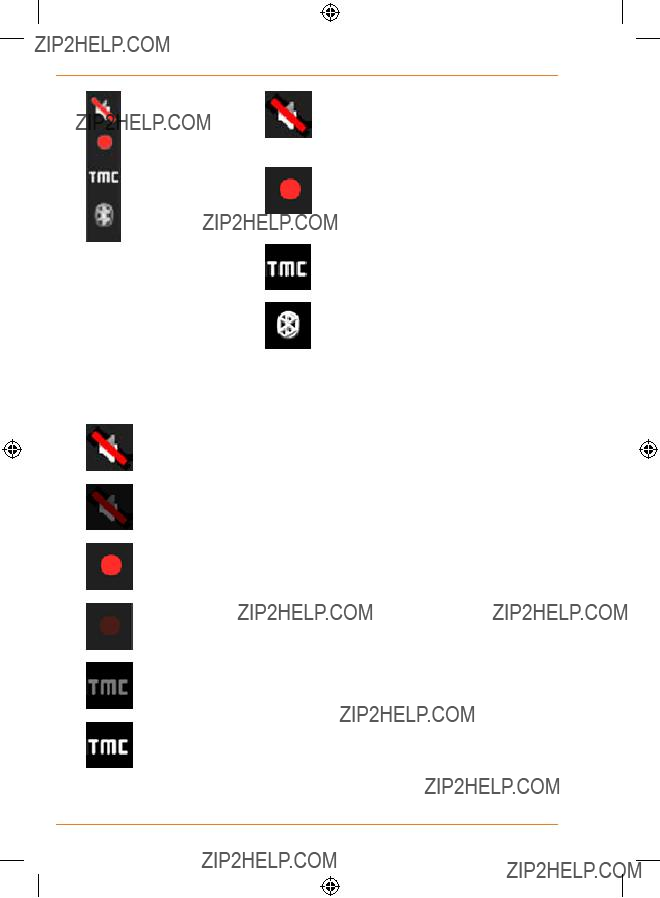
How Do I Use It?
Page 30

How Do I Use It?
There are new, unread TMC events.
A part of the route is bypassed based on TMC events.
A part of the route is mentioned in TMC events but could not be bypassed (for example, the destination is on a congested street).
The Bluetooth radio is switched off.
The Bluetooth radio is turned on, but no telephone is connected.
There is an error in the Bluetooth connection.
TRAX436 is connected to a telephone as a handsfree set via Bluetooth.
A phone call is in progress over the Bluetooth connection.
The following information can be seen in the three data fields shown on the map screen. Tap this area to open the Trip Information screen where you can select which values to be shown in these three fields.
When there is no active route, these fields show the following information: current speed, compass and the current time of day.
Page 31

How Do I Use It?
The next area is a combined status field. Tap this area to open the Quick menu (page 89).
Page 32
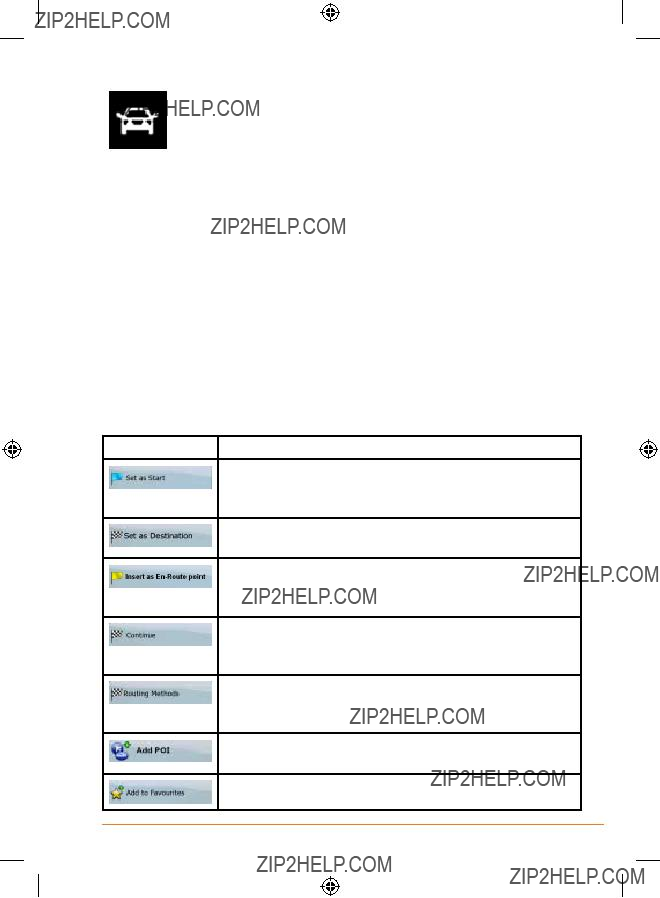
Using the Cursor (the selected map location)
First, place the Cursor at the desired map location with one of the following options:
???Use the Find menu to select a location. The map returns with the selected point (the Cursor) in the middle, and the Cursor menu appears with the available options.
???Tap the screen and tap again to place the Cursor at the desired
location. Now tap  to open the Cursor menu. You can perform the following actions:
to open the Cursor menu. You can perform the following actions:
Button Action
In the active route, uses the Cursor as the start point by replacing the current GPS position (available in Advanced mode only)
In the active route, uses the Cursor as the destination by replacing the previous destination
In the active route, uses the Cursor as a via point (an intermediate destination) preceding the destination (available in Advanced mode only)
In the active route, uses the Cursor as the destination while keeping the previous destination as a via point (available in Advanced mode only)
Shows the different routes calculated by the available routing methods. Choose the one that suits your needs the best.(available in Advanced mode only)
Saves the Cursor as a POI(available in Advanced mode only)
Saves the Cursor as a Favourite location
Page 33

How Do I Use It?
Saves the Cursor as a Road Safety Camera location (available in Advanced mode only)
Marks the map with a Pin at the Cursor (available in
Advanced mode only)
Opens a screen with the name, address and coordinate information of the Cursor, and the list of POIs near it
TRAX436 Concepts
Smart Zoom
Smart Zoom is a lot more than just a usual automatic zoom:
???While following a route calculated by TRAX436: when approaching a turn, it will zoom in and raise the view angle to let you easily recognise your manoeuvre at the next junction. If the next turn is at a distance, it will zoom out and lower the view angle to be flat so you can see the road in front of you.
???While driving without an active route in TRAX436: Smart Zoom will zoom in if you drive slowly and zoom out to the limit set here when you drive at high speed.
Enabling Smart Zoom
Tap the map to let the map control buttons appear, and then tap  to enable Smart Zoom.
to enable Smart Zoom.
Tap the map to let the map control buttons appear, and then tap and hold
 to open the Smart Zoom Settings window. Modify the zoom limits of Smart Zoom if necessary.
to open the Smart Zoom Settings window. Modify the zoom limits of Smart Zoom if necessary.
Page 34

How Do I Use It?
Position markers
Current GPS position and
When your GPS position is available, TRAX436 marks your current
position with the  icon on the map. The exact location of the position marker depends on the vehicle type used for route calculation.
icon on the map. The exact location of the position marker depends on the vehicle type used for route calculation.
The vehicle type can be selected in Route settings (page 94) or in the Quick Menu (page 89).
???If you choose pedestrian: The  icon is at your exact GPS position. The direction of the icon shows your actual heading.
icon is at your exact GPS position. The direction of the icon shows your actual heading.
???If you choose any of the vehicles: The  icon is aligned to the nearest road to suppress GPS position errors. The direction of the icon is one of the directions of the route.
icon is aligned to the nearest road to suppress GPS position errors. The direction of the icon is one of the directions of the route.
To use the current GPS position, tap  . The Position menu appears and you can save the GPS position as one of the following:
. The Position menu appears and you can save the GPS position as one of the following:
???a Favourite
???a Road Safety Camera
???a POI
???a map marker Pin
Return to normal navigation
When GPS position is available, and you have moved the map (the  icon is moving or is not even visible), or you have rotated the map in 3D
icon is moving or is not even visible), or you have rotated the map in 3D
mode, the  button appears. Tap it to move the map back to the GPS position and
button appears. Tap it to move the map back to the GPS position and
Page 35

How Do I Use It?
Selected location (Cursor)
If you select a location in the Find menu, or you tap the map when the map control buttons are visible, the Cursor appears at the selected point on the
map. TRAX436 displays the Cursor with a radiating red dot ( ) to make it visible at all zoom levels, even when it is in the background of a 3D map view.
) to make it visible at all zoom levels, even when it is in the background of a 3D map view.
When the Cursor is set, tap  . The Cursor menu appears and you can use the Cursor as one of the following:
. The Cursor menu appears and you can use the Cursor as one of the following:
???the start point of a route
???a via point in a route
???the destination of a route
You can also search for POIs around the Cursor.
Or you can save the location of the Cursor as:
???a Favourite
???a Road Safety Camera
???a POI
???a map marker Pin
Original position in the Cursor menu
When the Cursor menu is open, a special icon ( ) shows the Cursor position the menu was opened with.
) shows the Cursor position the menu was opened with.
You can move and zoom the map, and you can set the Cursor to a
different place. The usual Cursor ( ) appears, and the buttons of the Cursor menu initiate actions for this new location.
) appears, and the buttons of the Cursor menu initiate actions for this new location.
To return to the original Cursor position, tap  . The map jumps back to
. The map jumps back to
the position with which the Cursor menu was opened, and the  icon appears again.
icon appears again.
Page 36

How Do I Use It?
Daytime and night colour schemes
TRAX436 uses different colour schemes during the day and during the night.
???Daytime colours are similar to paper road maps.
???The night colour schemes use dark colours for large objects to keep the average brightness of the screen low.
TRAX436 offers different daytime and night colour schemes. It can also switch automatically between the daytime and the night scheme based on the current time and GPS position a few minutes before sunrise, when the sky has already turned bright, and a few minutes after sunset, before it
becomes dark.
Colour scheme in tunnels
When entering a tunnel, the colours of the map change. All buildings disappear, the large objects (such as surface waters or forests) and the empty areas between roads become black.
However roads and streets keep their original colours from the daytime or night colour scheme currently used.
After leaving the tunnel, the original colours return.
Route calculation and recalculation
TRAX436 calculates the route based on your preferences:
???Route calculation method:
???Fast
???Short
???Economical
???Easy
???Vehicle types :
???Car
???Taxi
???Bus
???Emergency vehicles
???Bicycle
Page 37

How Do I Use It?
???Pedestrian
???Road types:
???Unpaved Roads
???Permit Needed
???Motorways
???Toll Roads
???Charge Roads
???Ferries
???
TRAX436 automatically recalculates the route if you deviate from the proposed itinerary.
Depending on the type of the TMC event, TRAX436 also recalculates the route if a TMC event concerns a part of the recommended route.
For further information about Route Planning options, see page 104.
Itinerary
The Itinerary is the list of the route events, that is, the driving instructions.
When you are on the Map screen, you can display the Itinerary in one of the following ways:
???Tap the area between the Turn preview and the Travel data fields where the symbol of the second next manoeuvre is displayed (for example  ).
).
???In Advanced mode, tap the following buttons:
 ,
,  ,
, .
.
Page 38
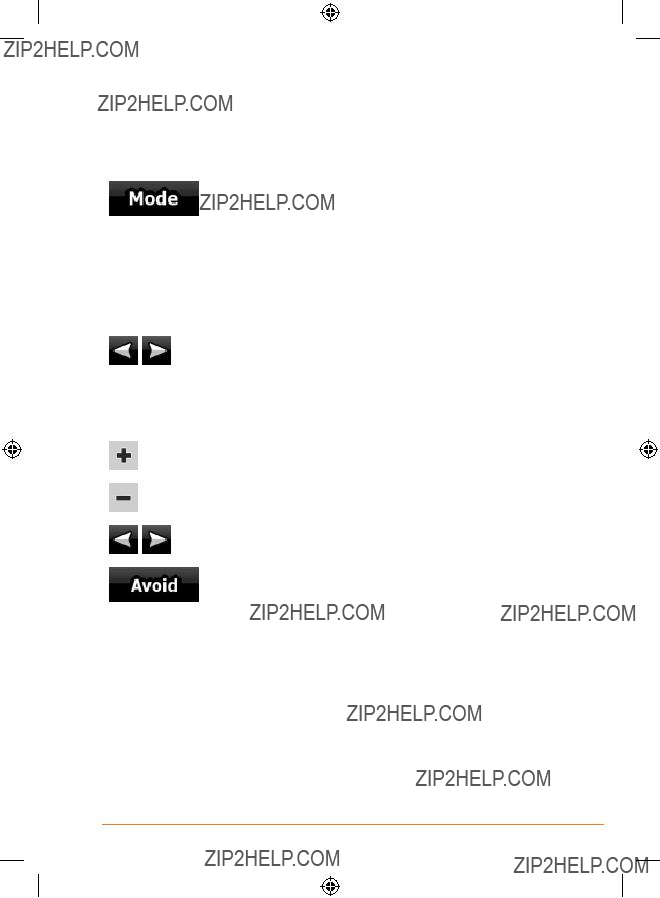
Track Logs
TRAX436 can log the track that you drive (page 66).
A Track Log is a recording of how your GPS position changed and it is independent of the route TRAX436 calculated.
Track Logs can be recorded, renamed, replayed, shown on the map, exported to a the internal Flash ROM in GPX format, and deleted. See page 66.
Page 39

How Do I Use It?
Independently of the normal track log, you can instruct TRAX436 to record the native GPS data received from the GPS device. These logs are saved as separate text files on the internal Flash ROM, and they cannot be shown or replayed in TRAX436.
To turn on NMEA/SIRF log saving, tap the following buttons:  ,
, ,
,  ,
, .
.
Route demonstration
A simulation drives you through the route, following the driving instructions (page 64). You can choose from a simulation at high speed or at normal driving speed.
You can use it, for example, to see which bridge TRAX436 planned for the route; if you do not want to take that bridge, you can avoid it.
Route demonstrations can be started from the Route menu by tapping the
 (high speed simulation) or the
(high speed simulation) or the  (simulation at normal speed) button.
(simulation at normal speed) button.
POI (Points of Interest)
A point of interest (POI) is a location that someone might find useful or interesting. TRAX436 is delivered with thousands of POIs and you can also create your own POIs in the application.
POI locations are marked on the map with special icons. POI icons are quite large so you can easily recognise the symbol. The icons are also
POIs are grouped into several levels of categories and subcategories. The icon of a POI that comes with the map shows the symbol of the POI category. If you save your own POI, you can select an icon for it
independently of the POI category you have put it in.
Page 40

How Do I Use It?
Saving POI
To save a POI, place the Cursor ( ) at the desired location, then tap the following buttons:
) at the desired location, then tap the following buttons:
 ,
,  ,
,  .
.
Managing POI
You can select which POI groups to show and which ones to hide on the map, and from which zoom levels POI icons are visible. At the same place you can manage your saved POIs. A saved POI can be renamed, moved to a different POI group, its icon can be changed, or a phone number and
additional information can be added to it. Tap the following buttons:  ,
,  ,
,  .
.
Road Safety Cameras
The location of a Road Safety Camera is a special POI. They cannot be searched like other POIs, and there is a special proximity warning only for cameras. You can save the Cursor as the location of a Road Safety
Camera.
Saving Road Safety Cameras
To save the location of a Road Safety Camera, place the Cursor
( ) at the desired location, then tap the following buttons:
) at the desired location, then tap the following buttons:  ,
,  ,
,  .
.
Camera warning
The warning for Road Safety Cameras can be turned on in Warning Settings. Tap the following buttons:  ,
,  ,
,  ,
,
 .
.
Page 41

How Do I Use It?
When you approach a Road Safety Camera with the warning enabled, the following happens:
???Visible Warning: The type of the camera is displayed in the secondary
Turn Preview field (for example  ).
).
???Audible Warning: If there is no speed limit given for the camera, or your speed is under the given speed limit, single beeps warn you about the camera.
???If you exceed the speed limit of the camera, the following also happens:
???Visible Warning: A symbol with the speed limit appears in the corner of
the map (for example:  ),
),
???Audible Warning: A special alert sound is played.
Camera types
There are different types of Road Safety Cameras.
Page 42
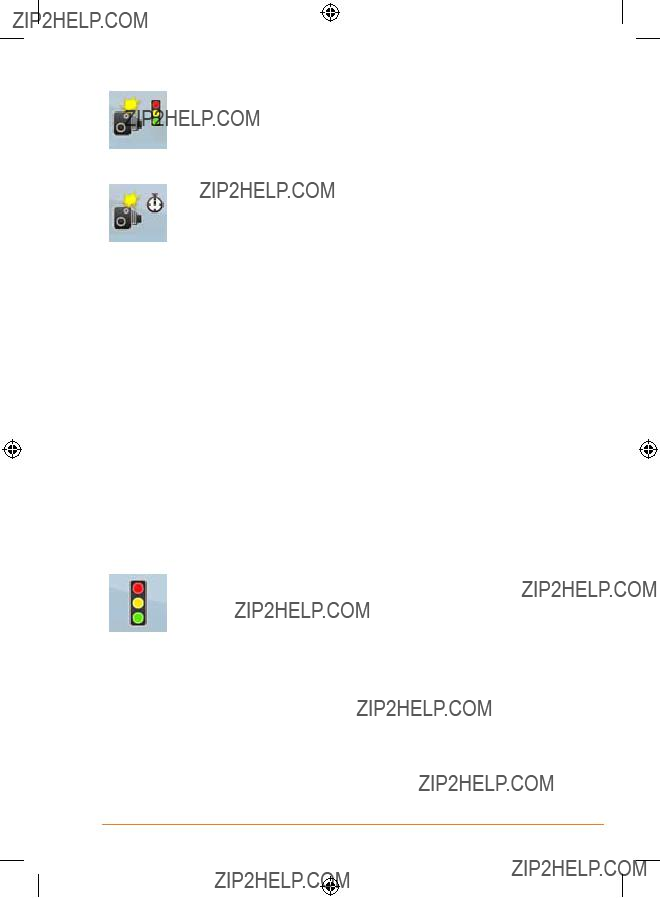
Camera directions
A speed camera can measure the speed of one direction of the traffic, both directions, or even several directions in an intersection, when they are mounted on a rotating base. The same directions apply to red light cameras. TRAX436 warns you only if you drive in a measured or possibly measured direction. The measured direction of the camera appears with the following symbols:
Page 43

How Do I Use It?
Symbol Description
The camera checks the speed of the direction into which you are driving.
The camera checks the speed of the opposite driving direction.
The camera checks the speed in both directions on the road.
The camera can check the speed in any direction.
Speed limit warning
Maps sometimes contain information about the speed limits of the road segments. This information may not be available for your region (ask your local dealer) or may not be fully correct for all roads on the map.
You can configure TRAX436 to warn you if you exceed the current limit.
Tap the following buttons:
 ,
,  ,
,  ,
,  .
.
When you exceed the speed limit, the following happens:
???Visible Warning: A symbol with the speed limit appears in the
corner of the map (for example:  ).
).
???Audible Warning: A voice message is played using the selected voice guidance profile.
Page 44

How Do I Use It?
TMC (Traffic Message Channel)
TRAX436 can provide you with even better routes if Traffic Message Channel (TMC) information is available. The TMC is a specific application of the FM Radio Data System (RDS) used for broadcasting
The TMC feature is enabled by default in TRAX436. TMC requires subscription to the service provided by a separate supplier. There is a fee for this service.
NOTE
TMC is not a global service. It may not be available in your country or region. Ask your local dealer for coverage details.
If public TMC data is broadcast at your location, TRAX436 automatically takes into account the TMC data received. You do not need to set anything in the program. The receiver will automatically search the FM radio stations for TMC data, and the decoded information will immediately be used in route planning. The moment TRAX436 receives traffic information that may affect your route, the program will warn you that it is recalculating the route, and navigation will continue with a new route that is optimal considering the most
If necessary, you can change the settings related to TMC, or select a specific
radio station to receive. Tap the following buttons:  ,
,  ,
, .
.
3: Navigating with TRAX436
You can set up your route in TRAX436 in several ways:
???If you need a simple route (a route with only one destination, without any intermediate via points), you can select the destination and start navigating to it right away
???you can plan a
???you can also plan a route independently of your current GPS position or even without GPS reception (available in Advanced mode only)
Page 45

How Do I Use It?
Selecting the destination of a route
TRAX436 offers you several ways of choosing your destination and via points (intermediate destinations):
???Use the selected location on the map (the Cursor) (page 46).
???Enter a full address or a part of an address, for example a street name without a house number or the names of two intersecting streets (page 47).
???Enter an address with postal code (page 55). This way you do not need to select the name of the settlement and the search for street names might be faster as well.
???Use a coordinate (page 60)
???Use a saved location:
???a Favourite (page 57)
???a POI (page 58)
???the History of previously set destinations and waypoints
(page 60)
If you are going to use a route later, save it before you start navigating. Tap the following buttons:
TIP  ,
,  ,
,  .
.
Selecting the Cursor as the destination
1.Locate your destination on the map: move and scale the map as needed (page 14).
2.Tap the location that you want to select as your destination. The Cursor ( ) appears.
) appears.
3.Tap  to open the Cursor menu.
to open the Cursor menu.
4.The map appears with the selected point in the middle. Tap  (Simple mode) or
(Simple mode) or 
Page 46

How Do I Use It?
(Advanced mode) from the Cursor menu. The route is then automatically calculated, and you can start navigating.
If you know that you will use a destination later, when the
Cursor menu appears, save it as a POI, or put it on the list
of your Favourites first. The Cursor menu returns
TIP automatically with the same point. Now you can use it as a route point.
Entering an address or part of an address
If you know at least a part of the address, it is the quickest way to select the destination of the route.
Using the same screen, you can find an address by entering:
???the exact address, including house number
???the centre of a settlement
???an intersection
???the midpoint of a street
???any of the above, starting the search with the postal code
(page 55)
Entering an address (Australia)
In some countries, the state is also used in addresses. If you are in one of these countries, or choose any of them from the list of countries, five lines appear on the screen:
The procedure is explained starting from the Navigation menu.
Page 47

How Do I Use It?
1.Tap the following buttons:  (Simple mode), or
(Simple mode), or  ,
,  (Advanced mode).
(Advanced mode).
2.By default, TRAX436 proposes the country, state and settlement where you are. If needed, tap the button with the name of the country, and select a different one from the list. If you select a new country, you also need to select the state, or tap  to search for a settlement regardless of the state it is in.
to search for a settlement regardless of the state it is in.
3.If you have not changed the country, you still have the possibility to change the state. Tap the button with the name of the state, and select from the list.
4.If needed, change the settlement:
???To select the settlement from the list of recently used ones, tap the  button.
button.
???To enter a new settlement:
1.Tap the button with the name of the settlement, or if you have changed the country/state, tap  .
.
2.Start entering the settlement name on the keyboard.
3.Get to the list of search results:
???After entering a couple of characters, the names that match the string appear in a list.
???Tap  to open the list of results before it appears automatically.
to open the list of results before it appears automatically.
4.Pick the settlement from the list.
5.Enter the street name:
1.Tap  .
.
2.Start entering the street name on the keyboard.
Page 48

How Do I Use It?
3.Get to the list of results:
???After entering a couple of characters, the names that match the string appear in a list.
???Tap  to open the list of results before it appears automatically.
to open the list of results before it appears automatically.
4.Pick the street from the list.
6.Enter the house number:
1.Tap  .
.
2.Enter the house number on the keyboard.
3.Tap  to finish entering the address.
to finish entering the address.
7.The map appears with the selected point in the middle. Tap  (Simple mode) or
(Simple mode) or  (Advanced mode) from the Cursor menu. The route is then automatically calculated, and you can start navigating.
(Advanced mode) from the Cursor menu. The route is then automatically calculated, and you can start navigating.
Entering an address if house numbering is restarted
There are long roads where the house numbering is restarted at some point. This way the same house number can appear twice or even more times on the same road. If this is the case, after giving the house number, you need to select the appropriate address by the district/suburb information.
The procedure is explained starting from the Navigation menu.
1.Tap the following buttons:  (Simple mode), or
(Simple mode), or
 ,
,  (Advanced mode).
(Advanced mode).
2.By default, TRAX436 proposes the country/state and settlement where you are. If needed, tap the button with the name of the
Page 49

How Do I Use It?
country/state, and select a different one from the list.
3.If needed, change the settlement:
??? To select the settlement from the list of recently used ones,
tap the  button.
button.
???To enter a new settlement:
1. Tap the button with the name of the settlement, or if you
have changed the country/state, tap  .
.
2.Start entering the settlement name on the keyboard.
3.Get to the list of search results:
???After entering a couple of characters, the names that match the string appear in a list.
???Tap  to open the list of results before it appears automatically.
to open the list of results before it appears automatically.
4.Pick the settlement from the list.
4.Enter the street name:
1.Tap  .
.
2.Start entering the street name on the keyboard.
3.Get to the list of results:
??? After entering a couple of characters, the names that match the string appear in a list.
??? Tap  to open the list of results before it appears automatically.
to open the list of results before it appears automatically.
4.Pick the street from the list.
5.Enter the house number:
1.Tap  .
.
Page 50

How Do I Use It?
2.Enter the house number on the keyboard.
3.Tap  to finish entering the address.
to finish entering the address.
6.A list appears with the matching addresses. Tap the desired one.
7.The map appears with the selected point in the middle. Tap  (Simple mode) or
(Simple mode) or  (Advanced mode) from the Cursor menu. The route is then automatically calculated, and you can start navigating.
(Advanced mode) from the Cursor menu. The route is then automatically calculated, and you can start navigating.
Entering an address without knowing the district/suburb
Long roads can run across several districts or suburbs. You may not know if a particular house number is in which of them. In this case, follow the instructions below:
The procedure is explained starting from the Navigation menu.
1.Tap the following buttons:  (Simple mode), or
(Simple mode), or
 ,
,  (Advanced mode).
(Advanced mode).
2.By default, TRAX436 proposes the country/state and settlement where you are. If needed, tap the button with the name of the country/state, and select a different one from the list.
3.If needed, change the settlement:
??? To select the settlement from the list of recently used ones,
tap the  button.
button.
???To enter a new settlement:
1. Tap the button with the name of the settlement, or if you
have changed the country/state, tap  . 2. Start entering the settlement name on the keyboard.
. 2. Start entering the settlement name on the keyboard.
Page 51

How Do I Use It?
3.Get to the list of search results:
???After entering a couple of characters, the names that match the string appear in a list.
???Tap  to open the list of results before it appears automatically.
to open the list of results before it appears automatically.
4.Pick the settlement from the list.
4.Enter the street name:
1.Tap  .
.
2.Start entering the street name on the keyboard.
3.Get to the list of results:
??? After entering a couple of characters, the names that match the string appear in a list.
??? Tap  to open the list of results before it appears automatically.
to open the list of results before it appears automatically.
4.Instead of picking one of the streets, tap  .
.
5.Enter the house number:
1.Tap  .
.
2.Enter the house number on the keyboard.
3.Tap  to finish entering the address.
to finish entering the address.
6.A list appears with the matching addresses. Tap the desired one.
7.The map appears with the selected point in the middle. Tap  (Simple mode) or
(Simple mode) or  (Advanced mode) from the Cursor menu. The route is then automatically calculated, and you can start navigating.
(Advanced mode) from the Cursor menu. The route is then automatically calculated, and you can start navigating.
Page 52

How Do I Use It?
Selecting an intersection as the destination
The procedure is explained starting from the Navigation menu.
1.Tap the following buttons:  (Simple mode), or
(Simple mode), or
 ,
,  (Advanced mode).
(Advanced mode).
2.By default, TRAX436 proposes the country/state and settlement where you are. If needed, tap the button with the name of the country/state, and select a different one from the list.
3.If needed, change the settlement:
??? To select the settlement from the list of recently used ones,
tap the  button.
button.
???To enter a new settlement:
1. Tap the button with the name of the settlement, or if you
have changed the country/state, tap  .
.
2.Start entering the settlement name on the keyboard.
3.Get to the list of search results:
???After entering a couple of characters, the names that match the string appear in a list.
???Tap  to open the list of results before it appears automatically.
to open the list of results before it appears automatically.
4.Pick the settlement from the list.
4.Enter the street name:
1.Tap  .
.
2.Start entering the street name on the keyboard.
3.Get to the list of results:
??? After entering a couple of characters, the names that
Page 53

How Do I Use It?
match the string appear in a list.
???Tap  to open the list of results before it appears automatically.
to open the list of results before it appears automatically.
4.Pick the street from the list.
5.Tap the  button.
button.
???If only a few intersecting streets exist, their list appears immediately.
???In case of a longer street, a keyboard screen appears.
Start entering the name of the intersecting street on the keyboard. As you type, if the matching streets can be shown on one screen, their list appears automatically.
6.Tap the desired intersecting street in the list.
7.The map appears with the selected point in the middle. Tap  (Simple mode) or
(Simple mode) or  (Advanced mode) from the Cursor menu. The route is then automatically calculated, and you can start navigating.
(Advanced mode) from the Cursor menu. The route is then automatically calculated, and you can start navigating.
Selecting a city centre as the destination
The City Centre is not the geometric centre of the settlement but an arbitrary point the map creators have chosen. In towns and villages, it is usually the most important intersection; in larger cities, it is an important intersection.
The procedure is explained starting from the Navigation menu.
1.Tap the following buttons:  (Simple mode), or
(Simple mode), or  ,
,  (Advanced mode).
(Advanced mode).
2.By default, TRAX436 proposes the country/state and settlement where you are. If needed, tap the button with the name of the country/state, and select a different one from the list.
3.If needed, change the settlement:
Page 54

How Do I Use It?
???To select the settlement from the list of recently used ones, tap the  button.
button.
???To enter a new settlement:
1. Tap the button with the name of the settlement, or if you
have changed the country/state, tap  .
.
2.Start entering the settlement name on the keyboard.
3.Get to the list of search results:
???After entering a couple of characters, the names that match the string appear in a list.
???Tap  to open the list of results before it appears automatically.
to open the list of results before it appears automatically.
4.Pick the settlement from the list.
4.Tap the  button.
button.
5.The map appears with the selected point in the middle. Tap
 (Simple mode) or
(Simple mode) or  (Advanced mode) from the Cursor menu. The route is then automatically calculated, and you can start navigating.
(Advanced mode) from the Cursor menu. The route is then automatically calculated, and you can start navigating.
Entering an address with a postal code
NOTE
The current Sensis R15 map does not support Post Codes as described in this section.
All of the above address searching possibilities can be performed with entering the postal code instead of the settlement name. Find below an example with a full address:
The procedure is explained starting from the Navigation menu.
1. Tap the following buttons:  (Simple mode), or
(Simple mode), or
Page 55

How Do I Use It?
 ,
,  (Advanced mode).
(Advanced mode).
2.By default, TRAX436 proposes the country/state and settlement where you are. If needed, tap the button with the name of the country/state, and select a different one from the list.
3.Tap the button with the name of the settlement, and enter the postal code:
1.Start entering the postal code on the keyboard.
2.Get to the list of results:
???After entering a couple of numbers, the ones that are a match appear in a list.
???Tap  to open the list of results before it appears automatically.
to open the list of results before it appears automatically.
3.Pick the settlement from the list.
4.Enter the street name:
1.Tap  .
.
2.Start entering the street name on the keyboard.
3.Get to the list of results:
???After entering a couple of characters, the names that match the string appear in a list.
???Tap  to open the list of results before it appears automatically.
to open the list of results before it appears automatically.
4.Pick the street from the list.
5.Enter the house number:
1.Tap  .
.
2.Enter the house number on the keyboard.
3.Tap  to finish entering the address.
to finish entering the address.
6. The map appears with the selected point in the middle. Tap
Page 56

How Do I Use It?
 (Simple mode) or
(Simple mode) or  (Advanced mode) from the Cursor menu. The route is then automatically calculated, and you can start navigating.
(Advanced mode) from the Cursor menu. The route is then automatically calculated, and you can start navigating.
Tips on entering addresses quickly
???When you are entering the name of a settlement or a street,
TRAX436 only displays those characters that appear in possible search results. The other characters are greyed out.
???When entering the settlement name or the street name, tap the
 button after a couple of letters; TRAX436 lists the items that contain the character set.
button after a couple of letters; TRAX436 lists the items that contain the character set.
???You can speed up finding an intersection:
???Search first for the street with a less common or less usual name; fewer letters are enough to find it.
???If one of the streets is shorter, search for that one first. You can then find the second one faster.
???You can search for both the type and the name of a road. If the same word appears in several names, for example in the name of streets, roads and avenues, you can obtain the result faster if you enter the first letter of the street type: For example, enter Pi A to obtain Pine Avenue and skip all Pine Streets and Pickwick Roads.
???You can also search in postal codes. This is useful when a street name is common and it is used in several districts of a city.
Selecting the destination from your Favourites
You can select a location that you have already saved as a Favourite to be your destination.
The procedure is explained starting from the Navigation menu.
1.Tap the following buttons:  (Simple mode) or
(Simple mode) or
 ,
,  (Advanced mode).
(Advanced mode).
2.Tap the Favourite that you want to set as your destination.
Page 57

How Do I Use It?
3.The map appears with the selected point in the middle. Tap  (Simple mode) or
(Simple mode) or  (Advanced mode) from the Cursor menu. The route is then automatically calculated, and you can start navigating.
(Advanced mode) from the Cursor menu. The route is then automatically calculated, and you can start navigating.
Selecting the destination from the POIs
You can select your destination from the POIs included with TRAX436 or from the ones you have previously created.
The procedure is explained starting from the Navigation menu.
1.Tap the following buttons:  (Simple mode), or
(Simple mode), or  ,
,  (Advanced mode).
(Advanced mode).
2.Select the area around which the POI should be searched:
??? : The POI will be searched around a given address.
: The POI will be searched around a given address.
??? : The map appears with the Cursor in the middle. Modify the location of the Cursor if necessary, then tap
: The map appears with the Cursor in the middle. Modify the location of the Cursor if necessary, then tap  . The POI will be searched around the given location.
. The POI will be searched around the given location.
??? : The POI will be searched around the current GPS position.
: The POI will be searched around the current GPS position.
??? : The POI will be searched around the destination of the active route.
: The POI will be searched around the destination of the active route.
??? : The POI will be searched not around a given point but by the size of the detour it means from the active route. This can be useful if you search for a later stopover that causes only a minimal detour. For example upcoming petrol stations or restaurants.
: The POI will be searched not around a given point but by the size of the detour it means from the active route. This can be useful if you search for a later stopover that causes only a minimal detour. For example upcoming petrol stations or restaurants.
Page 58

How Do I Use It?
3.You can narrow the search with the following:
???Select the POI group (e.g. Accomodation), and after that, if needed, select the POI subgroup (e.g. Hotel or Motel).
???To find the POI by its name, tap  , and use the keyboard to enter a part of the name.
, and use the keyboard to enter a part of the name.
???To list all POIs in a given POI group, tap  .
.
4.[optional] When finally the list of results appear, you can sort the list:
??? : sort the list alphabetically (available when you search around a single location)
: sort the list alphabetically (available when you search around a single location)
??? : sort the list by the distance from your current position in a straight line (available when you search around a single location)
: sort the list by the distance from your current position in a straight line (available when you search around a single location)
??? : sort the list by the distance to drive on route from your current position (available when you search along the active route)
: sort the list by the distance to drive on route from your current position (available when you search along the active route)
??? : sort the list by the size of the needed detour (available when you search along the active route)
: sort the list by the size of the needed detour (available when you search along the active route)
5.Tap the desired POI in the list.
6.The map appears with the selected point in the middle. Tap
 (Simple mode) or
(Simple mode) or  (Advanced mode) from the Cursor menu. The route is then automatically calculated, and you can start navigating.
(Advanced mode) from the Cursor menu. The route is then automatically calculated, and you can start navigating.
Selecting the destination with a saved POI search criteria
POI search criteria can be saved in the POI section of the Manage menu, but TRAX436 is already shipped with some saved criteria you can use instantly when searching for a POI.
Page 59
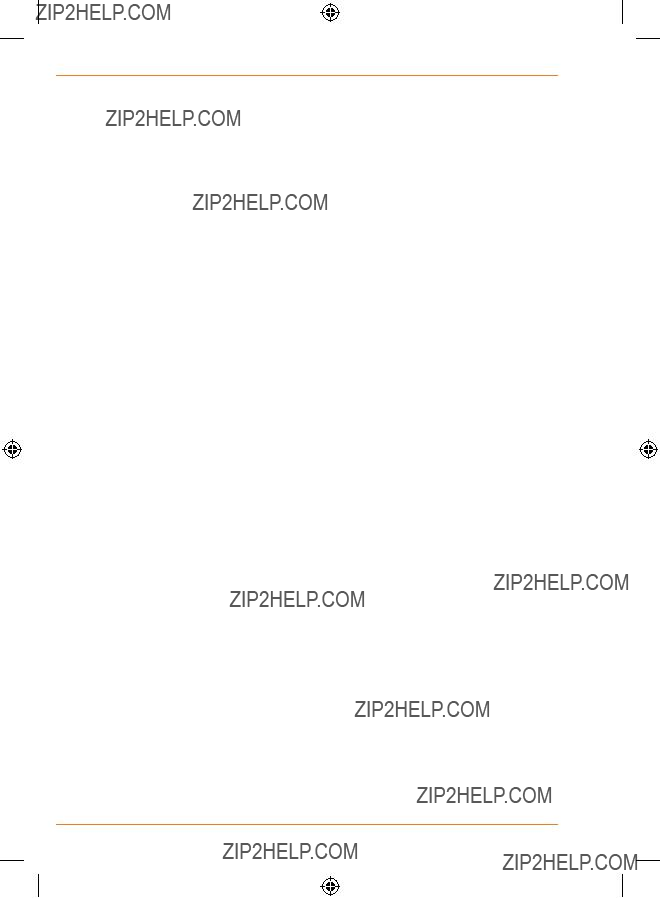
How Do I Use It?
The procedure is explained starting from the Navigation menu.
1.Tap the following buttons:  (Simple mode), or
(Simple mode), or  ,
,  (Advanced mode).
(Advanced mode).
2.Tap  .
.
3.Select one of the saved criteria, and the list of matching POIs appear.
4.Tap the desired POI in the list.
5.The map appears with the selected point in the middle. Tap  (Simple mode) or
(Simple mode) or  (Advanced mode) from the Cursor menu. The route is then automatically calculated, and you can start navigating.
(Advanced mode) from the Cursor menu. The route is then automatically calculated, and you can start navigating.
Selecting the destination from the History
The destinations that you have set earlier appear in the History. The procedure is explained starting from the Navigation menu.
1. Tap the following buttons:  (Simple mode), or
(Simple mode), or
 ,
,  (Advanced mode).
(Advanced mode).
2. If necessary, turn the page with to see earlier destinations.
3.Tap the desired item.
4.The map appears with the selected point in the middle. Tap  (Simple mode) or
(Simple mode) or  (Advanced mode) from the Cursor menu. The route is then automatically calculated, and you can start navigating.
(Advanced mode) from the Cursor menu. The route is then automatically calculated, and you can start navigating.
Selecting the destination by entering its coordinate
Page 60

How Do I Use It?
This feature is available in Advanced mode only.
The procedure is explained starting from the Navigation menu.
1.Tap the following buttons:  ,
,  .
.
2.[optional] Tap  to change the format of the displayed coordinates.
to change the format of the displayed coordinates.
3.Tap the latitude or longitude value to change the coordinate.
4.Enter the coordinate values in WGS84 format on the keyboard: the latitude (N or S) and the longitude (E or W).
5.Tap  .
.
6.The map appears with the selected point in the middle. Tap
 (Simple mode) or
(Simple mode) or  (Advanced mode) from the Cursor menu. The route is then automatically calculated, and you can start navigating.
(Advanced mode) from the Cursor menu. The route is then automatically calculated, and you can start navigating.
Creating a
This feature is available in Advanced mode only.
1.Select a new location as you did in the previous sections. This will be the additional destination in the route.
2.The map appears with the selected point in the middle, and the Cursor menu opens automatically.
3.Tap  to add the point as an intermediate destination preceding the final destination of the route.
to add the point as an intermediate destination preceding the final destination of the route.
4.[optional] To add more points to the route, repeat the above steps as many times as you like.
Page 61

How Do I Use It?
If you insert a via point in a route that is already a
The new point is the selected point in the list. You have the following options:
Button Action
The selected point moves up in the list (becomes a via point to be reached earlier). Tap this button repeatedly, and the point becomes the start point of the route.
The selected point moves down in the list (becomes a via point to be reached later). Tap this button repeatedly, and the point becomes the final destination of the route.
The route is reversed. The start point becomes the destination, the destination becomes the start point, and all via points are to be reached in the opposite order than before.
The route is optimised. The start point and the destination remain at their position, but the via points are reordered to make the shortest possible route.
The selected point is removed from the route. The route remains as it was before adding the new point.
Every time a new point is added, the route is recalculated automatically, and you can start navigating right away.
Creating a
This feature is available in Advanced mode only.
1.Select a new location as you did in the previous sections. This will be the additional destination in the route.
2.The map appears with the selected point in the middle, and the Cursor menu opens automatically.
Page 62

How Do I Use It?
3.Tap  to open the full Cursor menu with the additional functions.
to open the full Cursor menu with the additional functions.
4.Tap  to add the point as a new final destination demoting the previous one to the last intermediate destination.
to add the point as a new final destination demoting the previous one to the last intermediate destination.
5.[optional] To add more points to the route, repeat the above steps as many times as you like.
Every time a new point is added, the route is recalculated automatically, and you can start navigating right away.
Editing the route
This feature is available in Advanced mode only.
Tap the following buttons:  ,
,  ,
, .
.
The list of route points appear with the start point at the top of the list and the final destination at the bottom. If several via points exist, you might need to turn the page.
Tap one of the route points in the list. You have the following options:
Button Action
The selected point moves up in the list (becomes a via point to be reached earlier). Tap this button repeatedly, and the point becomes the start point of the route.
The selected point moves down in the list (becomes a via point to be reached later). Tap this button repeatedly, and the point becomes the final destination of the route.
The route is reversed. The start point becomes the destination, the destination becomes the start point, and all via points are to be reached in the opposite order than before.
The route is optimised. The start point and the destination remain at their position, but the via points are reordered to make the shortest possible route.
The selected point is removed from the route.
Page 63
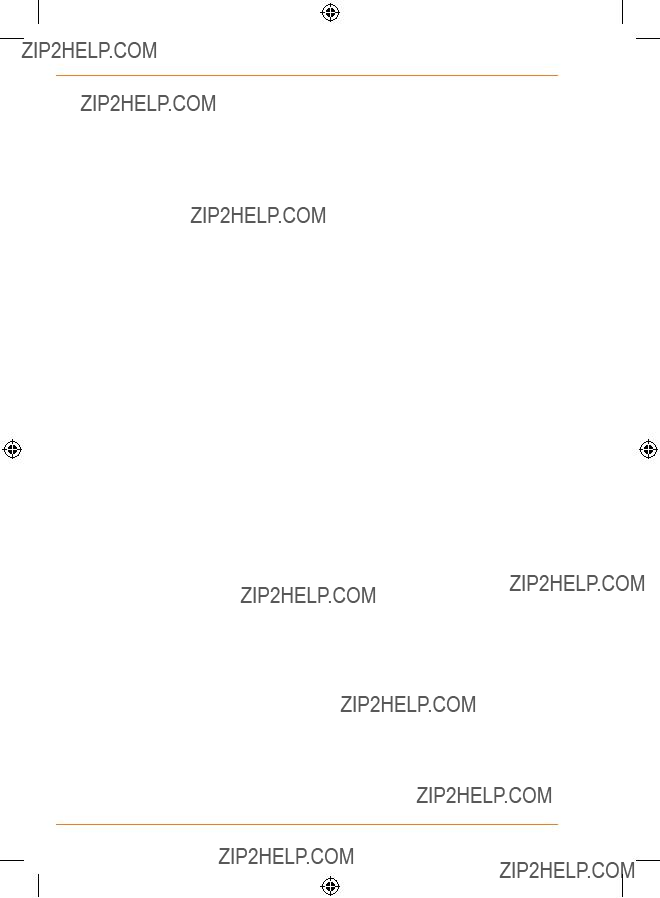
How Do I Use It?
As soon as you leave this screen, the route is recalculated automatically, and you can start navigating right away.
Viewing the whole route on the map
The map can be moved and scaled to show the whole line of the route. You do not need to manipulate the map manually. The Plan on Map feature does it for you.
In Advanced mode you have the following options to enter Plan on Map:
???Via the Find menu: tap  ,
,  ,
,  .
.
???Via the Route Information screen: tap  ,
,  ,
,  ,
,
 .
.
???Via the Route Information screen using a shortcut: tap  ,
,  .
.
Watching the simulation of the route
This feature is available in Advanced mode only.
The procedure is explained starting from the Map screen.
1.Tap the following buttons:  ,
,  .
.
2.The Route menu appears. There are two ways of running the route simulation:
???Tap  to run the simulation at high speed to give you a quick overview of the route.
to run the simulation at high speed to give you a quick overview of the route.
Page 64

How Do I Use It?
???Tap  to run the simulation at normal speed and with voice guidance instructions announced. This option is for demonstration purposes, or for checking difficult parts of the route in advance.
to run the simulation at normal speed and with voice guidance instructions announced. This option is for demonstration purposes, or for checking difficult parts of the route in advance.
3.The simulation can be aborted any time by tapping  .
.
Enabling Safety Mode
This feature is available in Advanced mode only.
Safety Mode disables the touch screen above 10 km/h (6 mph) to keep your attention on the road. While driving, you will not be able to set a new destination or to change settings. The only screen control that remains enabled is the gesture that puts you back on the Map screen.
The procedure is explained starting from the Map screen. Tap the following buttons:
 ,
,  ,
,  ,
,  .
.
Pausing the active route
You do not need to pause the active route: when you start driving again, TRAX436 restarts the voice instructions from your position.
Deleting the next via point from the route
The easiest way to delete the upcoming route point (the next via point) in Advanced mode is to open the Route Information screen by tapping
the Turn Preview field ( ) on the Map screen, and then tapping
) on the Map screen, and then tapping
 .
.
In Advanced mode, you have another option. Tap the following buttons:
 ,
,  ,
,  ,
,  .
.
Page 65

How Do I Use It?
Deleting the active route
The easiest way to delete the active route in Advanced mode is to open
the Route Information screen by tapping the Turn Preview field ( ) on
) on
the Map screen, and then tapping  .
.
In Advanced mode, you have another option. Tap the following buttons:  ,
,  ,
,  .
.
If via points exist in the active route, you cannot delete the route immediately on the Route Information screen.
Tap  repeatedly until all via points disappear
repeatedly until all via points disappear
NOTE
and thebutton appears. Tap it to cancel the whole route.
Using Track Logs
TRAX436 can record the track (how your GPS position changed) that you drive.
You do not need to select a destination and create a route for this; you can also record your driving path while
TIP cruising.
This feature is available in Advanced mode only.
The procedure is explained starting from the Map screen.
Recording the travelled path (creating a Track Log)
1.Start driving.
2.Tap the following buttons:  ,
,  ,
,  .
.
Page 66

How Do I Use It?
3.Start the recording: tap the  button. You return to the map and you can continue driving.
button. You return to the map and you can continue driving.
4.Repeat the above steps, then tap  later to stop the recording. TRAX436 labels the Track Log with a time stamp.
later to stop the recording. TRAX436 labels the Track Log with a time stamp.
(As an alternative, you can tap the  button in the Quick menu to start, and later to stop the Track Log recording.)
button in the Quick menu to start, and later to stop the Track Log recording.)
Simulating a Track Log on the map
1.Tap the following buttons:  ,
,  ,
,  .
.
2.Locate the desired Track Log, and then tap the  button next to it.
button next to it.
3.The map returns, and the Track Log simulation (a
4.You can stop the replay any time by tapping the  button.
button.
Changing the colour of a Track Log
1.Tap the following buttons:  ,
,  ,
,  .
.
2.Tap the desired Track Log and then tap one of the colour buttons.
Saving a route
This feature is available in Advanced mode only.
The procedure is explained starting from the Map screen.
Page 67

How Do I Use It?
1.Tap the following buttons:  ,
,  ,
,  .
.
2.Enter a name for the saved route, and then tap  .
.
When you save a route, TRAX436 not only saves the route points but the whole itinerary:
???The saved route might have been influenced by TMC information.
When you later use the route, it appears as it was saved, but if it needs to be recalculated, the current TMC information will be used in the new route.
???If you updated your map since you first saved the route,
TRAX436 recognises the change, and recalculates the driving instructions according to the latest available map information.
???TRAX436 deletes from the route the via points that you already left behind during navigation together with the road segments used to reach it. To avoid this, if you want to save the route, you need to save it before you start navigating.
Loading a saved route
This feature is available in Advanced mode only.
The procedure is explained starting from the Map screen.
1.Tap the following buttons:  ,
,  ,
,  .
.
2.Tap the route you wish to navigate.
3.In the very likely case when the start position of the saved route is different from the current GPS position, you need to confirm whether you want to stop navigating from the current GPS position to use the start point of the loaded route.
???If you choose this option, the automatic
???If you choose to keep the current GPS position as the start point, the route will be recalculated starting from your current position.
4.The map appears, and you can start navigating.
Page 68

How Do I Use It?
4: Reference book (Advanced mode)
On the following pages you will find the description of the different menu screens of TRAX436 in Advanced mode. In Simple mode, these functions work the same way, but only a few of them are available.
The Navigation menu:
TRAX436 starts with the Navigation menu. From there you can access the following screens:
Map screen
TRAX436 is primarily intended for land navigation. That is why maps in TRAX436 look similar to paper road maps. However, TRAX436 provides much more than regular paper maps: you can customise the look and the content of the map.
The most important and most often used screen of TRAX436 is the Map screen.
Page 69

How Do I Use It?
During navigation, the screen shows route information and trip data (left screenshot), but when you tap the map, additional buttons and controls appear for a few seconds (right screenshot). Most parts of the screen
behave as buttons.
Page 70

Page 71
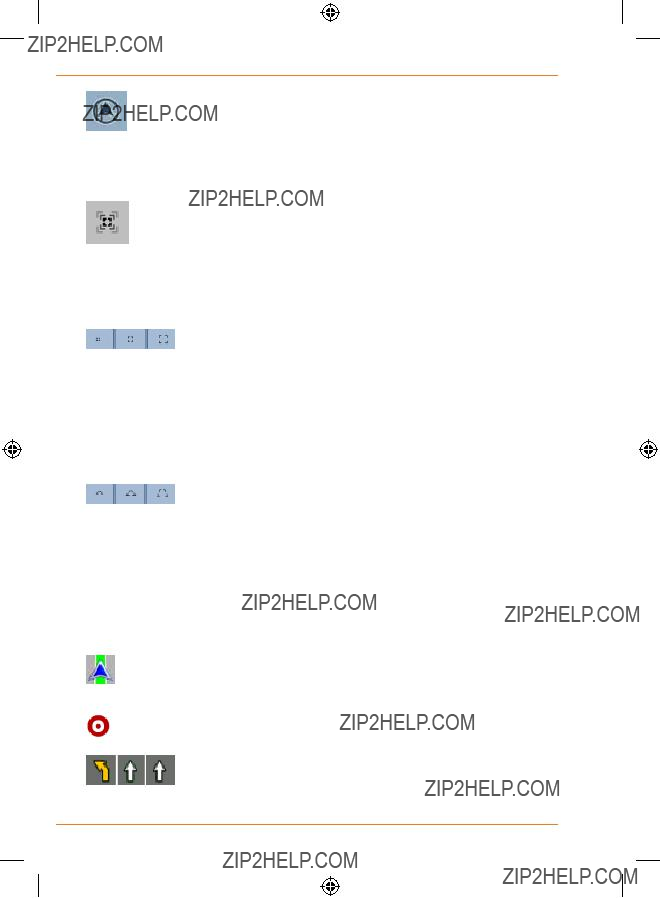
How Do I Use It?
Page 72

How Do I Use It?
Icons on the map
There are several status icons on the map. Most of them also function as a button. The information they provide is as follows:
???GPS position quality
???Battery status
???Vehicle type used for route calculation
???Sound status (muted or enabled)
???Track log recording status
???TMC reception and processing status
???Bluetooth connection and communication status
Battery, GPS position quality and
Vehicle type indicator
This is a complex indicator, and a button that opens the Quick menu.
The battery part shows information about the rechargeable battery of the device.
Icon Description
The battery is charging. The device runs on external power.
The battery is not charging but it is full.
The battery is not full but it still has enough capacity.
Page 73

How Do I Use It?
You need to recharge the battery.
The GPS reception quality shows the current accuracy of the position information.
Icon Description
TRAX436 has no connection to the GPS receiver: GPS navigation is not possible.
Devices with a
TRAX436 is connected to the GPS receiver, but the signal is too weak and the receiver cannot determine the GPS position.
GPS navigation is not possible.
Only a few satellites are received. Position information is available, but elevation (altitude) cannot be calculated. GPS navigation is possible, but the position error may be significant.
Altitude information is available, the position is a 3D position. GPS navigation is possible.
The remaining part of the field shows the vehicle type used for route
calculation.
Page 74

How Do I Use It?
Bicycle
Pedestrian
Status indicator strip
This is a complex indicator. In one strip it indicates the following status information:
Icon Description
The sound output of TRAX436 is muted.
The sound output of TRAX436 is enabled.
TRAX436 records a Track log when GPS position is available.
Track log recording is disabled.
No TMC receiver is connected or TMC is turned off.
TMC receiver is connected and a radio station with TMC broadcast is received.
There are new, unread TMC events.
A part of the route is bypassed based on TMC events.
Page 75

How Do I Use It?
A part of the route is mentioned in TMC events but could not be bypassed (for example, the destination is on a congested street).
The Bluetooth radio is switched off.
The Bluetooth radio is turned on, but no telephone is connected.
There is an error in the Bluetooth connection.
TRAX436 is connected to a telephone as a handsfree set via Bluetooth.
A phone call is in progress over the Bluetooth connection.
Next two route events (Turn Preview fields)
There are two fields reserved on the Map screen to display the next two manoeuvres (route events that are listed in the Itinerary). Both the type of the event (turn, roundabout, exiting motorway, etc.) and distances are displayed (the top manoeuvre shows the distance from the current GPS position, and the lower manoeuvre shows the distance between the next point and the final destination, or 3rd position).
Most of these icons are very intuitive and you also know them as road signs. The following table lists some of the frequently shown route events. The
same symbols are used in both fields:
Icon Description
Turn left.
,
Turn right.
,
Page 76

How Do I Use It?
Turn back.
,
Bear right.
,
Turn sharp left.
,
Keep left.
,
Continue straight in the intersection.
,
Enter roundabout. The number of the exit is shown in the
,circle, but only for the next turn.
Enter motorway.
,
Exit motorway.
,
Board ferry.
,
Leave ferry.
,
Approaching the next via point.
,
Approaching the destination.
,
In certain situations when route events are not important, these fields show other useful pieces of information. They are described here: page 16.
Page 77

How Do I Use It?
Objects on the map
Streets and roads
TRAX436 shows the streets in a way that is similar to how the paper road maps show them. Their width and colours correspond to their importance: you can easily tell a motorway from a small street.
TIP
If you prefer not to see street names during navigation, turn them off (page 103).
3D object types
To enable or disable 3D visualisation on the map, tap the following buttons:
 ,
,  ,
,  ,
,  . TRAX436 supports the following 3D object types:
. TRAX436 supports the following 3D object types:
Elements of the active route
TRAX436 shows the route in the following way:
Page 78

Page 79

How Do I Use It?
Detour menu
This screen contains quick detour possibilities during navigation. It can be
opened directly from the Map screen by tapping  . You have the following options:
. You have the following options:
Page 80
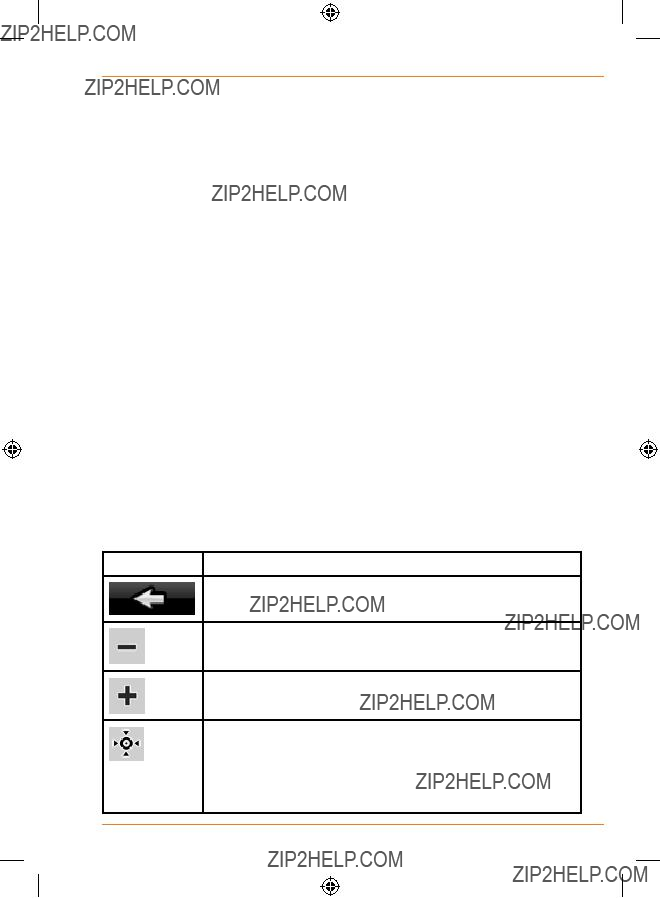
How Do I Use It?
??? On the main part of the screen you can see the first page of Saved
Search Criteria. Select any of the criteria to quickly receive the list of nearest matching POIs, and instantly plan a new route to the desired one, or insert it as a via point in your active route.
???In Advanced mode more buttons appear at the bottom:
??? : If you want to bypass a part of the route starting from the next intersection, tap this button, and select a distance to bypass.
: If you want to bypass a part of the route starting from the next intersection, tap this button, and select a distance to bypass.
??? : If you have used the above function before, tap this button to clear the restrictions from the map.
: If you have used the above function before, tap this button to clear the restrictions from the map.
Cursor menu
As soon as you select one point in the Find menu, the map appears with the Cursor menu, a menu with possible actions for the selected point.
Alternatively, when you tap the map, control buttons appear. Tap again to
place the Cursor, a radiating red dot. Now tap  , and the Cursor menu opens with a list of options.
, and the Cursor menu opens with a list of options.
In order to show a part of the map with the Cursor menu, it contains only a
few buttons first. Tap  to get all the options.
to get all the options.
Button Description
Closes the Cursor menu, and returns to the previous screen.
Zooms out the map.
Zooms in the map.
With the Cursor menu open, you can still move or scale the map, and tap the map anywhere to place the Cursor to a new location, but when you use this button, the Cursor jumps back to the place where it was at the time when you opened the Cursor menu.
Page 81

How Do I Use It?
Displayed at the Cursor if it is at the same location with which the Cursor menu was opened.
Displayed at the Cursor if it has been relocated since the
Cursor menu was opened.
Opens a new screen with the address and coordinate of the Cursor, and the list of nearby POIs.
Opens the
A new route is calculated with the Cursor as the destination. The previous route is deleted.
If the Cursor is at or near the destination, this button replaces the previous one, and deletes the current destination from the route. The last via point is promoted as destination, or if there are no via points, the route is deleted.
The Cursor is added to the active route as an intermediate route point, a point to be reached before the destination. If there is already a via point in the route, the Edit Route screen opens to let you decide where the new via point is to appear in the route.
If the Cursor is at or near one of the via points, this button replaces the previous one, and deletes the selected via point from the route. The route is recalculated without the deleted point.
The Cursor is appended at the end of the route as the new destination. The previous destination is demoted, and becomes the last via point.
This button is similar to the  button, but a new screen opens, and the route is calculated with all the possible route calculation methods (Fast, Short,
button, but a new screen opens, and the route is calculated with all the possible route calculation methods (Fast, Short,
Economical and Easy). Observe the results, and choose one of the routes to navigate.
The Cursor becomes the start point of the route. This means that the route will not be started from the current GPS position, and Automatic
Page 82

How Do I Use It?
If the Cursor is at or near the selected start point, this button replaces the previous one, and deletes the start point from the route. The current GPS position is used again as the start point, and Automatic
The Cursor is saved as a user POI. Select the POI group and give a name for the POI, then select a suitable icon, enter a phone number, and additional information if you like.
Map locations can be marked with Pins. Unlike POIs, a Pin has no name and other details, only a colour to let you tell one from another on the map.
If the Cursor is at or near a Pin, this button replaces the previous one, and deletes the Pin the Cursor is near to.
The Cursor is saved as the location of a Road Safety Camera (speed camera or red light camera). A new screen appears where you can set the type of the camera, the direction of the measured traffic, and the speed limit checked (if applicable).
If the Cursor is at or near a Road Safety Camera, this button replaces the previous one, and opens a new screen where you can edit the details of the camera.
The location of the Cursor is added to the list of frequently visited destinations, the so called Favourites. You can give a name for the Favourite.
Position menu
When you follow the recommended route on the map (the Cursor is the current GPS position), the Position menu replaces the Cursor menu. It does not contain buttons that modify the current route, as the GPS position is not useful as a route point.
To open the Position menu, tap  .
.
Page 83

How Do I Use It?
Route Information screen
The Route Information screen has all the data and some of the functions you need while you navigate. There are two ways to open this screen:
???It can be opened directly from the Map screen by tapping the Turn
Preview field ( ).
).
???In Advanced mode, from the Navigation menu tap the following buttons:
 ,
,  .
.
In the top section of the screen you see information about the current route.
The fields on this screen are continuously updated while you keep the screen open.
When you open the screen, all fields contain information about reaching your final destination. Tap any of the fields to see data on the via points starting from the first one through the final destination again.
You have the following data and functions on this screen:
Page 84

Page 85

How Do I Use It?
Trip Information screen
The Trip Information screen has both route and travel data you might need during your journey. It can be opened directly from the Map screen by
tapping the Trip Data field ( ).
).
The fields on this screen are continuously updated while you keep the screen open.
When you open the screen, all route data fields contain information
about reaching your final destination. Tap  and the fields concerning your route display data for the next via point. Tap the button repeatedly to toggle between the two possibilities.
and the fields concerning your route display data for the next via point. Tap the button repeatedly to toggle between the two possibilities.
You have the following data and functions on this screen:
Page 86

How Do I Use It?
Page 87
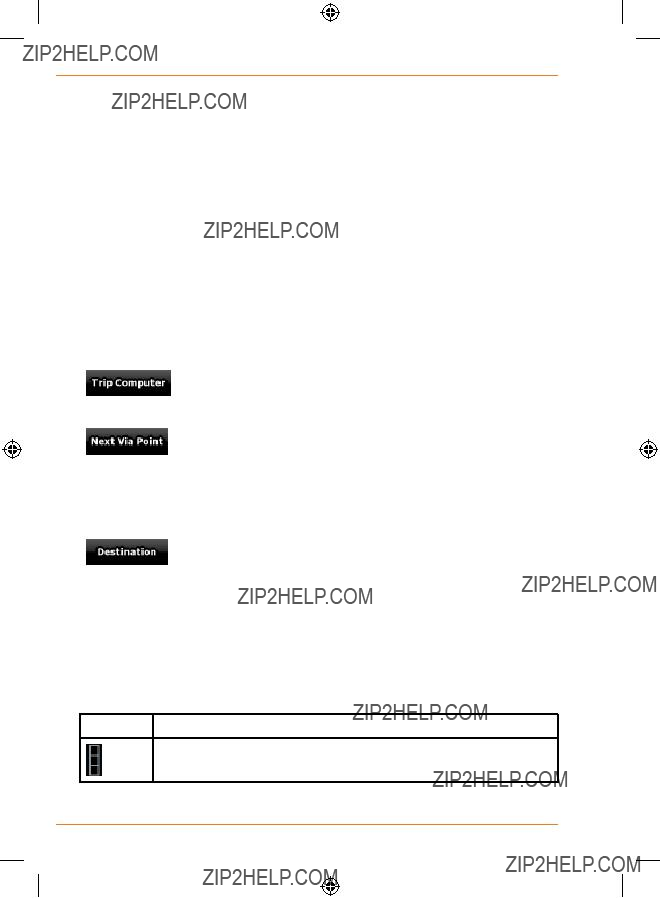
How Do I Use It?
Most of the fields on this screen have a  symbol next to them. This symbol shows whether the field it is attached to is shown on the map as a Trip Data.
symbol next to them. This symbol shows whether the field it is attached to is shown on the map as a Trip Data.
It also shows the position of the data as follows:
Symbol Description
This value is not shown on the map screen.
Page 88

How Do I Use It?
This value appears on the map screen in the Trip Data area. This is the value at the top.
This value appears on the map screen in the Trip Data area. This is the value in the middle.
This value appears on the map screen in the Trip Data area. This is the value at the bottom.
Trip Computer screen
The Trip Computer screen provides collected trip data. It can be opened from the Trip Information screen by tapping  .
.
The fields on this screen are continuously updated while you keep the screen open.
You can switch between the trips, pause then resume them, or reset their data.
You have the following functions on this screen:
Name Description
Pauses the trip currently shown on the screen. Values on the screen stop changing.
This button replaces the previous one if it has been activated. Tap it to resume collecting trip data.
Resets all counters of the currently shown trip. Collecting trip data is restarted only when TRAX436 receives a position from the GPS.
Cycles through all trips.
,
Quick menu
The Quick menu is a selection of controls that are frequently needed during navigation. It can be opened directly from the Map screen by tapping
 .
.
Page 89

How Do I Use It?
If you tap any of the switches in the Quick menu except for the Vehicle type, the Map screen immediately returns. A switch is on if its lamp is lit. The Vehicle type button is different. It is a
Page 90
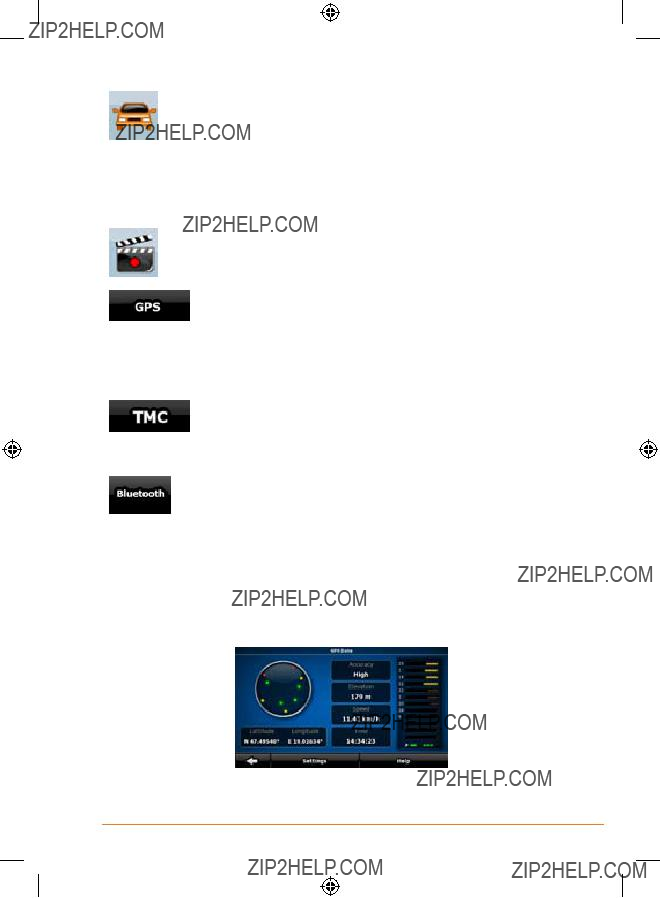
GPS data screen
Tap the following buttons:  ,
,  to open the GPS Data screen and to see the status of the GPS reception.
to open the GPS Data screen and to see the status of the GPS reception.
Page 91

How Do I Use It?
Page 92

Find menu
Select the destination of your route. Tap the following buttons:  ,
,  .
.
Page 93

How Do I Use It?
Page 94

Manage menu
You can manage the content that TRAX436 stores. Tap the following buttons:  ,
,  .
.
Manage Saved Routes
You can manage the previously saved routes. Tap the following buttons:  ,
,  ,
,  .
.
Page 95

How Do I Use It?
Manage History
You can manage the list of locations you used lately. Tap the following buttons:  ,
,  ,
,  .
.
Manage Track Logs
You can record Track Logs, then play them back, display them on the map, and see their details. Tap the following buttons:
 ,
,  ,
,  .
.
Page 96

How Do I Use It?
Stops the ongoing Track Log recording. (You can also stop the track log recording in the Quick menu.)
Button with the name of Shows the details of the selected Track Log. the track log
Starts a simulated playback of the selected
Track Log on the map.
Turns the page for additional list items.
,
When track log details are shown:
Manage Favourites
You can manage the list of your Favourites. Tap the following buttons:  ,
,  ,
,  .
.
Page 97

How Do I Use It?
Manage POIs
You can manage your POIs, and set the POI visibility for both your POIs and the ones that came with the product. Tap the following buttons:  ,
,  ,
,
 .
.
Page 98

How Do I Use It?
This POI group is not shown on the map.
This POI group and all its subgroups are shown on the map.
This POI group and some of its subgroups are shown on the map.
This POI group contains POIs that you saved.
When a POI group is open for editing:
The distance buttons set the zoom level
,from which the items in the POI group will be shown on the map.
Subgroups under the edited POI group will inherit its visibility settings.
When a POI item is open for editing:
Page 99

How Do I Use It?
Tap this button to delete the selected POI.
Tap this button to move the POI to another
POI group or subgroup.
Manage Saved Search Criteria
You can manage the list of search criteria previously saved to easily find frequently searched POI types. Tap the following buttons:
 ,
,  ,
,  .
.
User Data Management
You can manage the data you have saved (Pins, POIs, Favourites, History, and Track logs) and the settings you have made in the program. Tap the
following buttons:  ,
,  ,
,  .
.
Page 100

Settings menu
You can configure the program settings, and modify the behaviour of
TRAX436. Tap the following buttons:  ,
,  .
.
The Settings menu has two pages of submenus. Tap  to access the other options.
to access the other options.
Page 101

How Do I Use It?
Page 102

How Do I Use It?
Map Screen settings
You can
following buttons:  ,
,  .
.  .
.
Page 103

How Do I Use It?
Sound settings
You can adjust the sounds of TRAX436. Tap the following buttons:  ,
,
 .
.  .
.
Page 104

How Do I Use It?
Route Planning options
These settings determine how routes will be calculated. Tap the following buttons:  ,
,  ,
,  .
.
Page 105

How Do I Use It?
Vehicle types:
???Car
???Taxi
???Bus
???Emergency vehicles
???Bicycle
???Pedestrians
Road Types Used for Route Planning:
Page 106
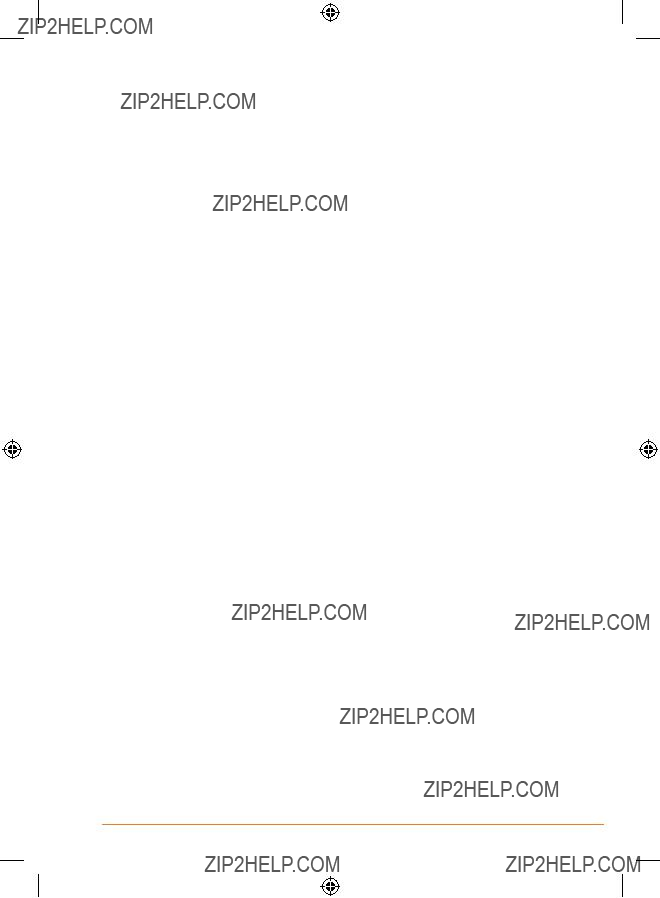
Regional settings
These settings allow you to adjust the application for your local language, measurement units, time and date and their formats, as well as choose the
voice guidance profile you prefer. Tap the following buttons:  ,
,  ,
,
 .
.
Page 107

How Do I Use It?
Page 108

How Do I Use It?
Navigation settings
You can control how TRAX436 behaves during navigation. Tap the following buttons:  ,
,  ,
,  .
.
Page 109

How Do I Use It?
Warning settings
You can enable some handy warnings, and disable the touch screen in a moving vehicle with Safety Mode. Tap the following buttons:  ,
,  ,
,
 .
.
Page 110

Page 111
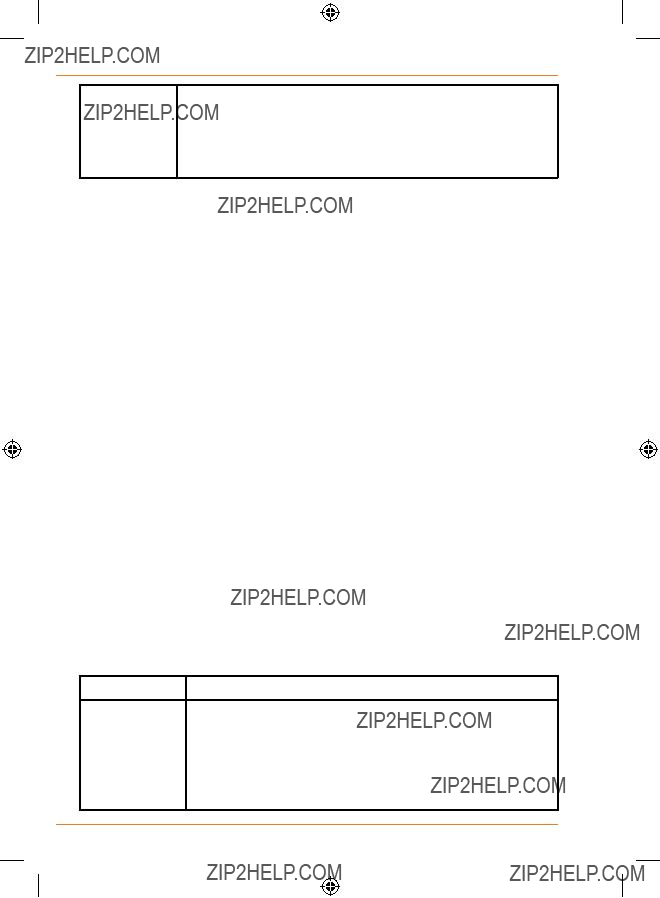
How Do I Use It?
Safety Mode Safety Mode disables the touch screen above 10 km/h (6 mph) to keep your attention on the road. While driving, you will not be able to set a new destination or to change settings. The only screen control that remains enabled is the gesture that puts you back on the Map screen.
GPS settings
You can set up the connection to the GPS receiver. Tap the following buttons:  ,
,  ,
,  .
.
TMC settings
You can set up the connection to the TMC receiver. If the TMC receiver is working, you can select the radio station to be received. Tap the following
buttons:  ,
,  ,
,  .
.
Type Description
Use Auto- If
tuner sweeps through the FM CCIR radio band searching for a TMC signal. The first station with TMC data will be used automatically. When no TMC signal is available, the tuner keeps on searching. Turn off
Page 112

Menu settings
You can modify the look and behaviour of the Menu screens. Tap the following buttons:  ,
,  ,
,  .
.
Device settings
You can change some device settings to control the screen backlight when TRAX436 is running. Tap the following buttons:
 ,
,  ,
,  .
.
Page 113

How Do I Use It?
Track Log settings
You can set up an automatic Track Log saving, and
Tap the following buttons:  ,
,  ,
,  .
.
Page 114

Page 115

How Do I Use It?
6: Bluetooth
TRAX436 includes Bluetooth?? connectivity. With its integrated microphone TRAX436 allows you to answer and make calls from the touch screen. Access to the Bluetooth feature is in the Quick menu screen (page 89).
From the Map screen tap the following buttons:  ,
,  The Bluetooth Phone Menu screen appears.
The Bluetooth Phone Menu screen appears.
Phone Menu
The Phone Menu screen is the main menu of the Bluetooth feature. The following Phone Menu screen shows Bluetooth Off with no paired phone.
Bluetooth Off (No Phone)
Touch  to exit to Quick Menu.
to exit to Quick Menu.
Pairing a Bluetooth Phone
Your mobile phone needs to be paired or registered to TRAX436 to use the Bluetooth feature. Touch  and then touch
and then touch .
.
Bluetooth On (No Phone)
Page 116

How Do I Use It?
Paired Device (No Phone)
Touch  to search for Bluetooth devices.
to search for Bluetooth devices.
Make sure the Bluetooth on your phone is enabled.
Touch  to begin search
to begin search
TRAX436 will search for and list nearby Bluetooth devices.
Touch to select the desired Bluetooth device.
No Paired Devices are currently listed
Page 117

How Do I Use It?
Touch to initiate connection with Bluetooth device.
to initiate connection with Bluetooth device.
About to connect to your phone for the first time.
If your phone requires you to specify a password, enter:
1234
You should set up your phone to allow connecting to your navigator automatically in the future. See your phone manual for more details.
Pairing is finished.
Touch  to exit the pairing procedure.
to exit the pairing procedure.
Page 118

How Do I Use It?
Managing Bluetooth Devices
Bluetooth Off
Touch to turn BT on
Bluetooth On (Disconnected)
Touch to Connect to paired device (Bluetooth mobile phone)
You may have multiple phones set up for connection with your TRAX436.
Bluetooth Off (Connected)
Below is the typical display when Bluetooth on your mobile is set to connect automatically.
Bluetooth On (Connected)
Page 119

How Do I Use It?
Paired Devices Screen
You can add and remove phones from your list and disconnect and connect to different phones using the List Screen. If you have phones already paired to the TRAX436, but have none of them currently connected, the following
screen appears when you touch  from the Main Menu.
from the Main Menu.
This screen allows you to connect to a device, add devices, and remove devices.
Paired Devices
Page 120

How Do I Use It?
Answering a Bluetooth Call
When a Bluetooth call
is received  the name and
the name and
number is displayed.
Touch  to accept the call and begin talk.
to accept the call and begin talk.
Touch  to talk on phone
to talk on phone
Touch  to talk on phone
to talk on phone
Page 121

How Do I Use It?
Making a Bluetooth Call (from Dial Pad)
To make a Bluetooth call touch the following buttons from the Map screen.
 ,
,  ,
,  .
.
2. Touch to call
Phone Menu (Talk)
3. Touch to  end call
end call
2. ii) Touch to mote call
Page 122

How Do I Use It?
Making a Bluetooth Call (from PhoneBook)
Add to Phonebook
Touch  to open Phonebook list.
to open Phonebook list.
If the phonebook is empty tap  to download phonebook from paired phone.
to download phonebook from paired phone.
Phonebook Empty
Touch to add Phonebook from Mobile Phone
Dial from Phonebook
Phonebook Downloaded
Select Name
Touch  ,
,  to scroll down the phonebook list.
to scroll down the phonebook list.
Page 123

How Do I Use It?
Touch  ,
,  to sort the list by first name (F) or last name (L).
to sort the list by first name (F) or last name (L).
Touch name to select. If a name entry has multiple numbers then these will display.
Name w/multiple number
Touch phone number to begin call.
Making Call
Making a Bluetooth Call (from Call Log)
Call Log
Touch  to open Call Log list.
to open Call Log list.
If the call log is empty TRAX436 will download the call log from the paired phone.
Page 124

How Do I Use It?
Touch to select call log. The details of the selected logged call will display.
Dialled Call
Touch  to cancel call.
to cancel call.
Missed Call
Touch 
 to begin call.
to begin call.
Page 125

How Do I Use It?
6: Glossary
2D/3D GPS reception
The GPS receiver uses satellite signals to calculate its (your) position and need at least four signals to give a
Active route
The currently navigated route. You can save and load routes in TRAX436, but only one route can be active at any given time, and it is always active until you delete it, reach your destination or you quit TRAX436. See also: Route.
City Centre
The City Centre is not the geometric centre of the settlement but an arbitrary point the map creators have chosen. In towns and villages, it is usually the most important intersection; in larger cities, it is an important intersection.
GPS accuracy
Several factors have impact on the deviation between your real position and the one given by the GPS device. For example, signal delay in the ionosphere or reflecting objects near the GPS device have a different and varying impact on how accurately the GPS device can calculate your position.
Map
TRAX436 works with digital maps which are not simply the computerised versions of traditional paper maps. Similarly to the paper road maps, the 2D mode of digital maps show you streets, roads, and elevation is also shown by colours. In 3D mode, you can see the altitude differences, for example valleys, mountains and elevated roads.
You can use digital maps interactively: you can zoom in and out (increase or decrease the scale), you can tilt them up and down, and turn them
left and right. In
Page 126

How Do I Use It?
In
Overview mode
You can instruct TRAX436 to automatically switch to Overview mode if the next route event is in a distance. In Overview mode the map is shown in
2D but scaled down to a predefined zoom level. When you approach the next route event, the previous 2D or 3D map view returns automatically.
Route
A series of destinations to be reached one after the other. A simple route contains one start point and only one destination.
Scheme
TRAX436 comes with different colour schemes for the map for daytime or night use. Schemes are custom graphic settings for the map and they can have different colours for streets, blocks or surface waters in 2D and 3D modes, and they display shades or shadows in different ways in 3D mode.
One daytime scheme and one night scheme is always selected. TRAX436 uses them when it switches from day to night and back.
In
Road Safety Camera
A special POI type for speed cameras and red light cameras. Different data sources are available, and you can also mark the position of a Road Safety Camera on the map.
You can configure TRAX436 to warn you when you approach one of these cameras.
Page 127

NOTES
Page 128

NOTES
Page 129
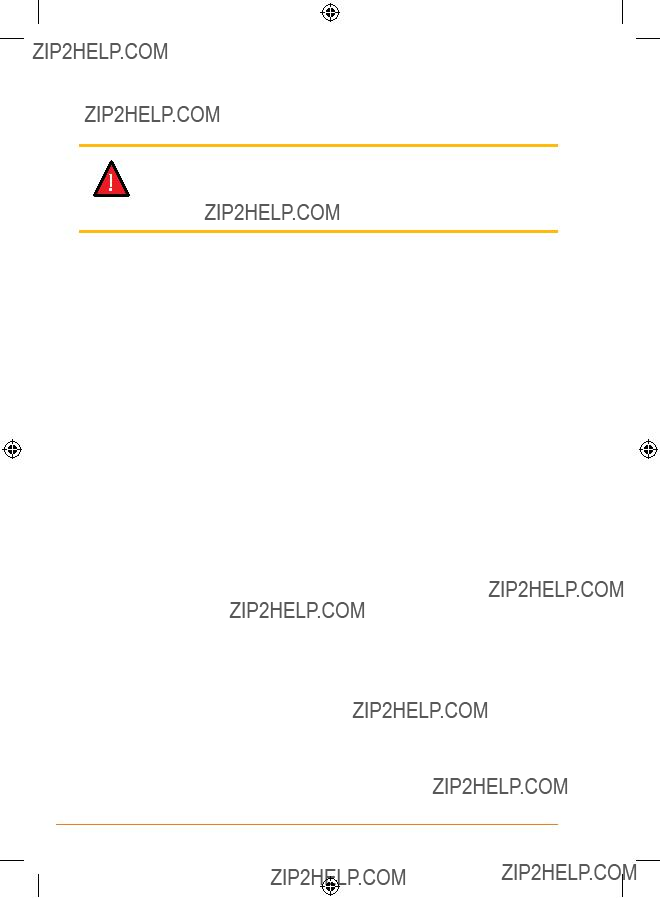
UNIDEN TRAX436 IN CAR NAVIGATION
Limited One Year Warranty
NOTE
Please keep your sales docket as it provides evidence of warranty.
Important: Evidence of original purchase is required for warranty service.
Warrantor: Uniden Australia Pty Limited A.B.N. 58 001 865 498 Uniden New Zealand Limited
Warranty is only valid in the original country of purchase.
ELEMENT OF WARRANTY: Uniden warrants to the original retail owner for the duration of this warranty, its TRAX436 (herein after referred to as the Product), to be free from defects in materials and craftsmanship with only the limitations or exclusions set out below.
WARRANTY DURATION: This warranty to the original retail owner only, shall terminate and be of no further effect ONE (1) year after the date of original retail sale. This warranty will be deemed invalid if the product is;
(A)Damaged or not maintained as reasonable and necessary,
(B)Modified, altered or used as part of any conversion kits, subassemblies, or any configurations not sold by Uniden,
(C)Improperly installed,
(D)Repaired by someone other than an authorized Uniden Repair Agent for a defect or malfunction covered by this warranty,
(E)Used in conjunction with any equipment or parts or as part of a system not manufactured by Uniden, or
(F)Where the Serial Number label of the product has been removed or damaged beyond recognition.
Warranty only valid in the country of original retail/sale.
Page 130
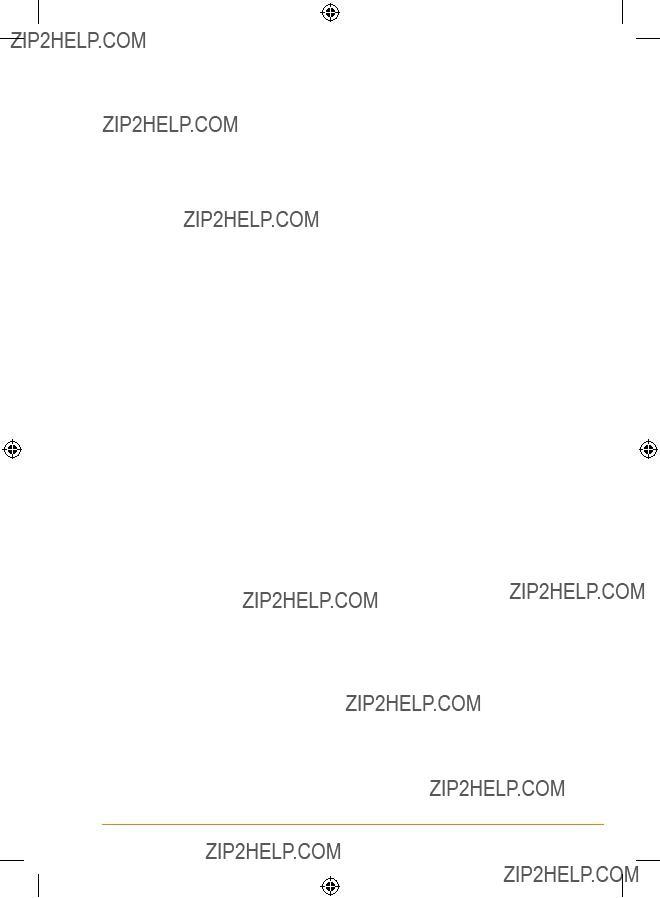
PARTS COVERED: This warranty covers for one (1) year, the Product and included accessories.
STATEMENT OF REMEDY: In the event that the Product does not conform to this warranty at any time while this warranty is in effect, the warrantor at its discretion, will repair the defect or replace the Product and return it to you without charge for parts or service. This warranty does not provide for reimbursement or payment of incidental or consequential damages.
This EXPRESS WARRANTY is in addition to and does not in any way affect your rights under the TRADE PRACTICES ACT 1974 (Cth) (Australia) or the CONSUMER GUARANTEES ACT (New Zealand).
PROCEDURE FOR OBTAINING PERFORMANCE OR WARRANTY: In the event that the product does not conform to this warranty, the Product should be shipped or delivered, freight
Page 131

Thank you for buying a Uniden product.
?? 2008 Uniden Australia Pty Limited. Uniden New Zealand Ltd. Printed in China.
USZZ01216ZZ(0)